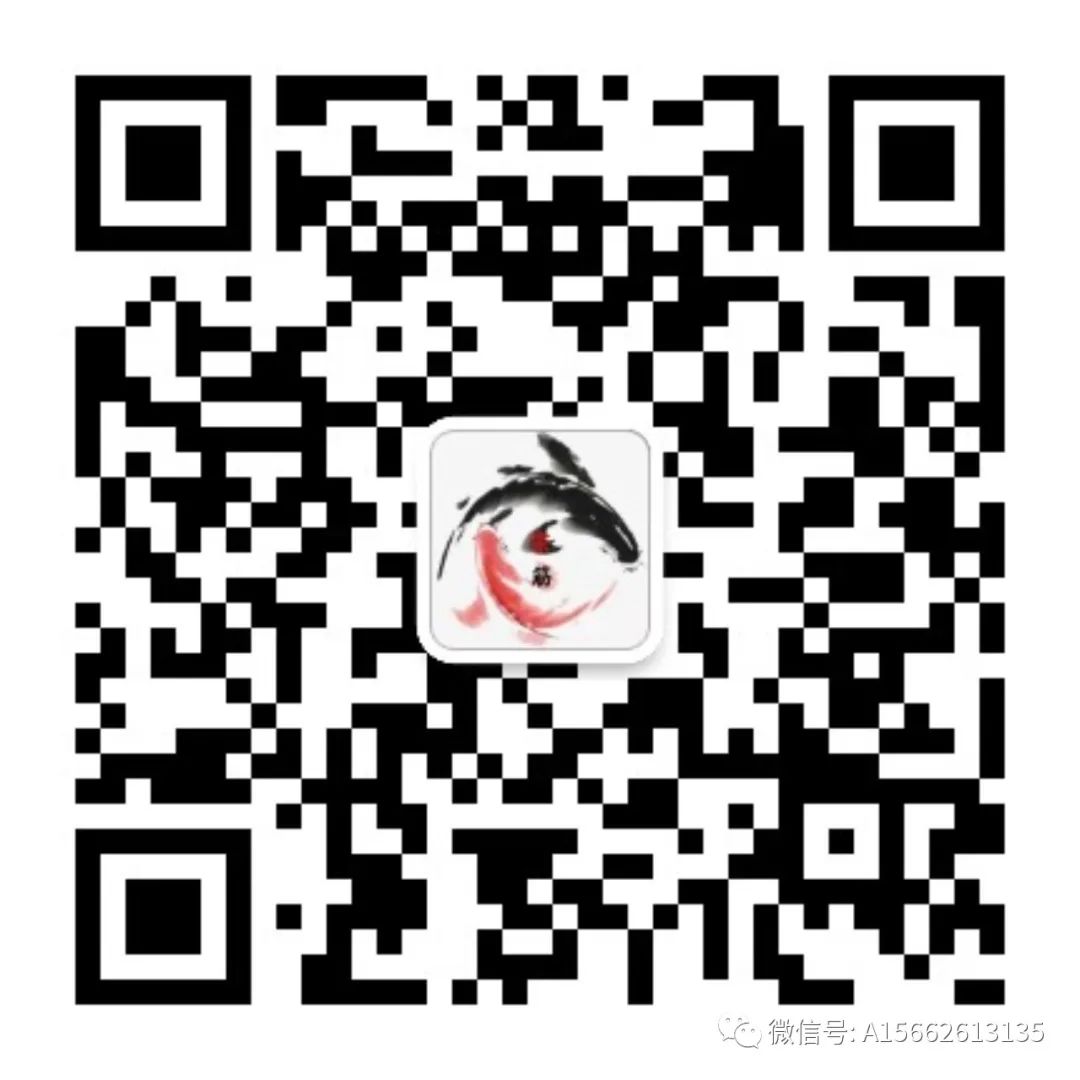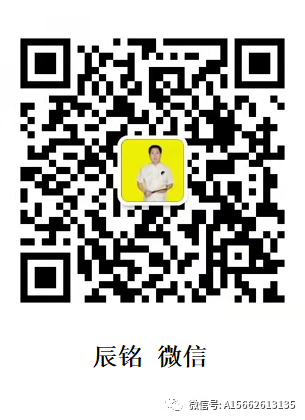
Twelve Meridians
Also known as “Twelve Regular Meridians”, these are the meridians associated with the twelve organs and are the main body of the meridian system.
The names of the twelve meridians are composed of three parts: hands and feet, yin and yang, and organs,
including the three yin meridians of the hand (Shou Taiyin Feijing (Hand Taiyin Lung Meridian), Shou Jueyin Xinbao Jing (Hand Jueyin Pericardium Meridian), Shou Shaoyin Xinjing (Hand Shaoyin Heart Meridian)),
the three yang meridians of the hand (Shou Yangming Dachang Jing (Hand Yangming Large Intestine Meridian), Shou Shaoyang Sanjiao Jing (Hand Shaoyang Sanjiao Meridian), Shou Taiyang Xiaochang Jing (Hand Taiyang Small Intestine Meridian)),
the three yang meridians of the foot (Zu Yangming Weijing (Foot Yangming Stomach Meridian), Zu Shaoyang Danjing (Foot Shaoyang Gallbladder Meridian), Zu Taiyang Pangguang Jing (Foot Taiyang Bladder Meridian)),
and the three yin meridians of the foot (Zu Taiyin Pijing (Foot Taiyin Spleen Meridian), Zu Jueyin Gan Jing (Foot Jueyin Liver Meridian), Zu Shaoyin Shen Jing (Foot Shaoyin Kidney Meridian)).
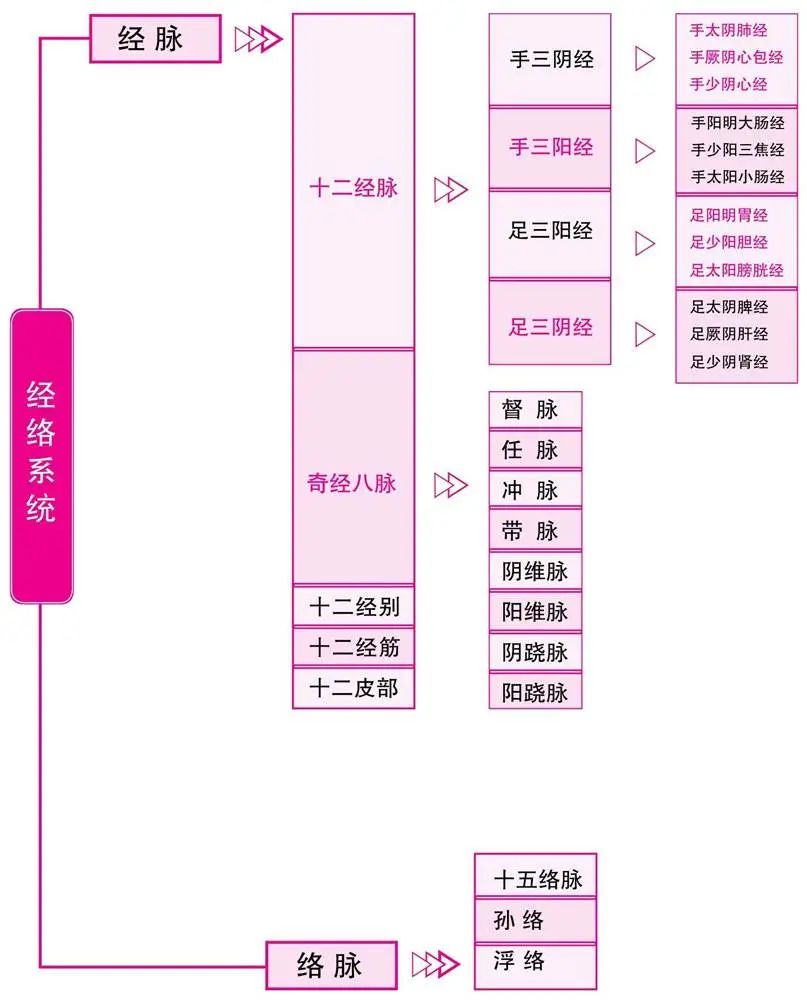
Pathway of the Meridians:
The pathways of the twelve meridians follow a specific order: the three yin meridians of the hand run from the chest and abdomen to the hands, the three yang meridians of the hand run from the hands to the head, the three yang meridians of the foot run from the head to the feet, and the three yin meridians of the foot run from the feet to the chest and abdomen.
Flow Sequence of the Twelve Meridians:
The twelve meridians are the main channels for the circulation of qi and blood, starting from the Shou Taiyin Feijing (Hand Taiyin Lung Meridian), sequentially passing through the Shou Yangming Dachang Jing (Hand Yangming Large Intestine Meridian), Zu Yangming Weijing (Foot Yangming Stomach Meridian), Zu Taiyin Pijing (Foot Taiyin Spleen Meridian), Shou Shaoyin Xinjing (Hand Shaoyin Heart Meridian), Shou Taiyang Xiaochang Jing (Hand Taiyang Small Intestine Meridian), Zu Taiyang Pangguang Jing (Foot Taiyang Bladder Meridian), Zu Shaoyin Shen Jing (Foot Shaoyin Kidney Meridian), Shou Jueyin Xinbao Jing (Hand Jueyin Pericardium Meridian), Shou Shaoyang Sanjiao Jing (Hand Shaoyang Sanjiao Meridian), Zu Shaoyang Danjing (Foot Shaoyang Gallbladder Meridian), Zu Jueyin Gan Jing (Foot Jueyin Liver Meridian), and returning to the Shou Taiyin Feijing (Hand Taiyin Lung Meridian), forming a system of circulation that integrates yin and yang.
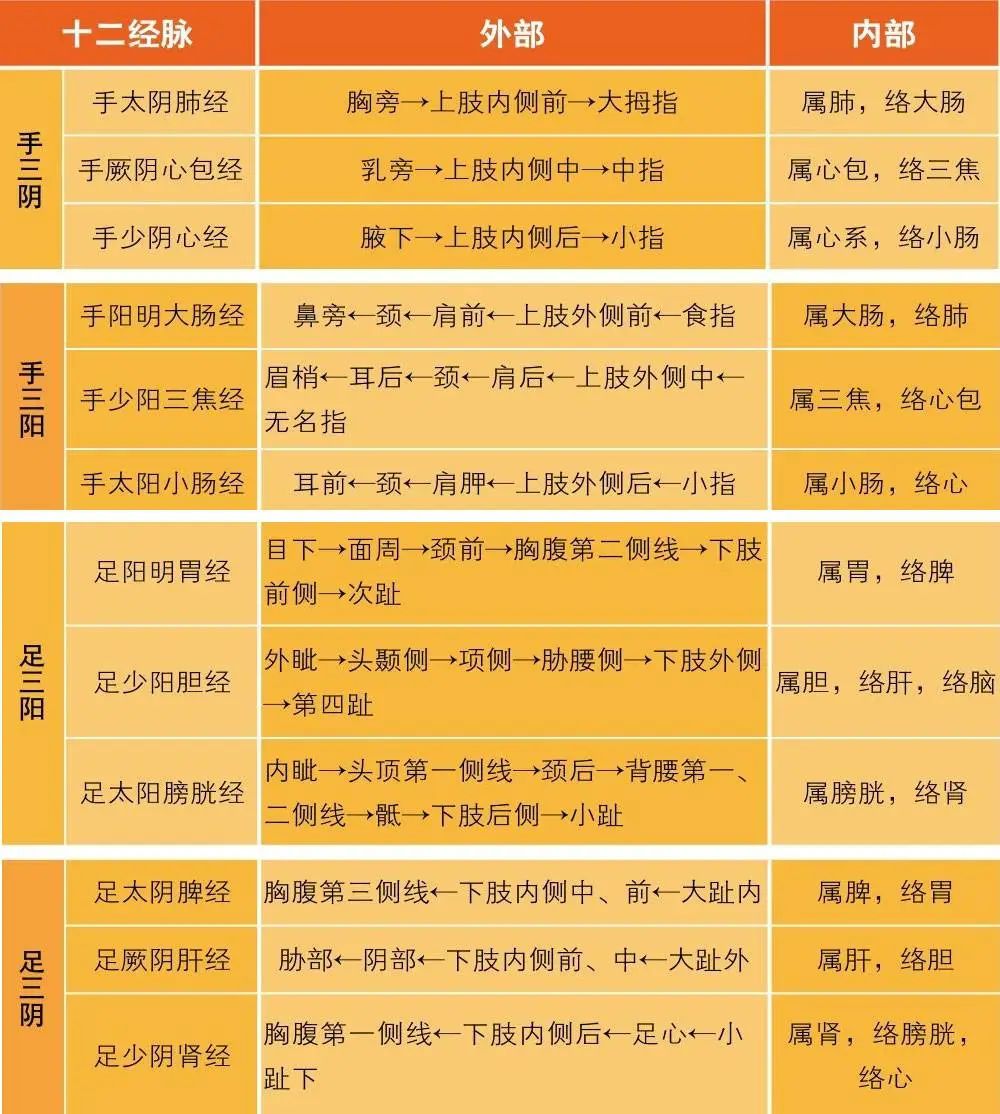
1: Shou Taiyin Feijing (Hand Taiyin Lung Meridian)
The Shou Taiyin Feijing (Hand Taiyin Lung Meridian) is the starting meridian of the twelve meridians, connecting with the lungs and linking down to the large intestine. Thus, the lungs and large intestine are interrelated organs.
The lungs are positioned highest among the five organs and six bowels, shaped like a cone, with their leaves drooping, resembling the canopy of a chariot from the Warring States period, hence referred to as the “canopy of the five organs and six bowels”.
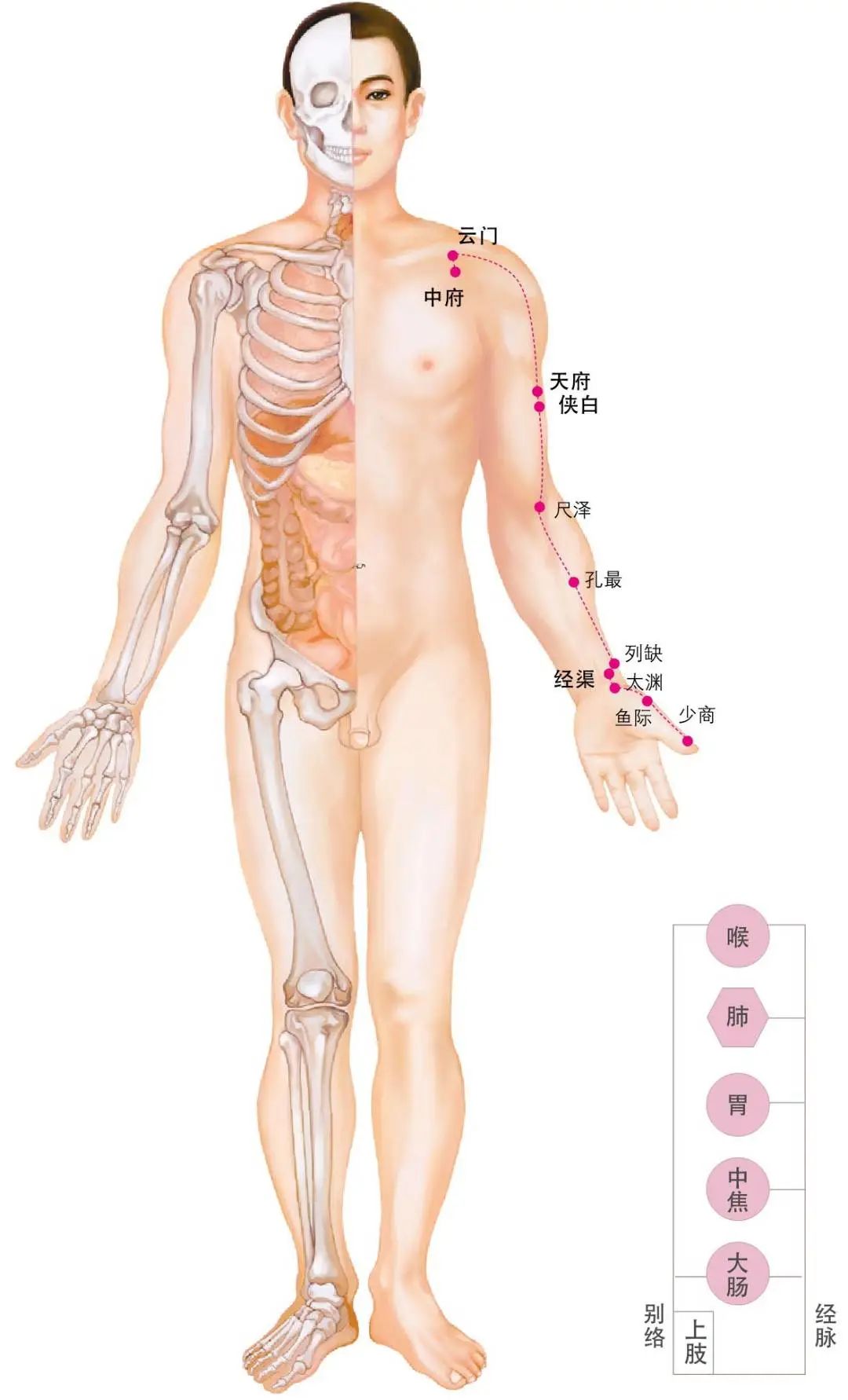
2: Shou Yangming Dachang Jing (Hand Yangming Large Intestine Meridian)
The Shou Yangming Dachang Jing (Hand Yangming Large Intestine Meridian) connects at the index finger with the Shou Taiyin Feijing (Hand Taiyin Lung Meridian), relating to the organs of the mouth, lower teeth, and nose, belonging to the large intestine, and linking to the lungs, connecting with the Zu Yangming Weijing (Foot Yangming Stomach Meridian) near the nose.
The large intestine meridian has a natural protective function for the lymphatic system, and regular stimulation can enhance the body’s immunity, preventing the occurrence of lymphatic tuberculosis, thus it can be said to be the guardian of the human lymphatic system.
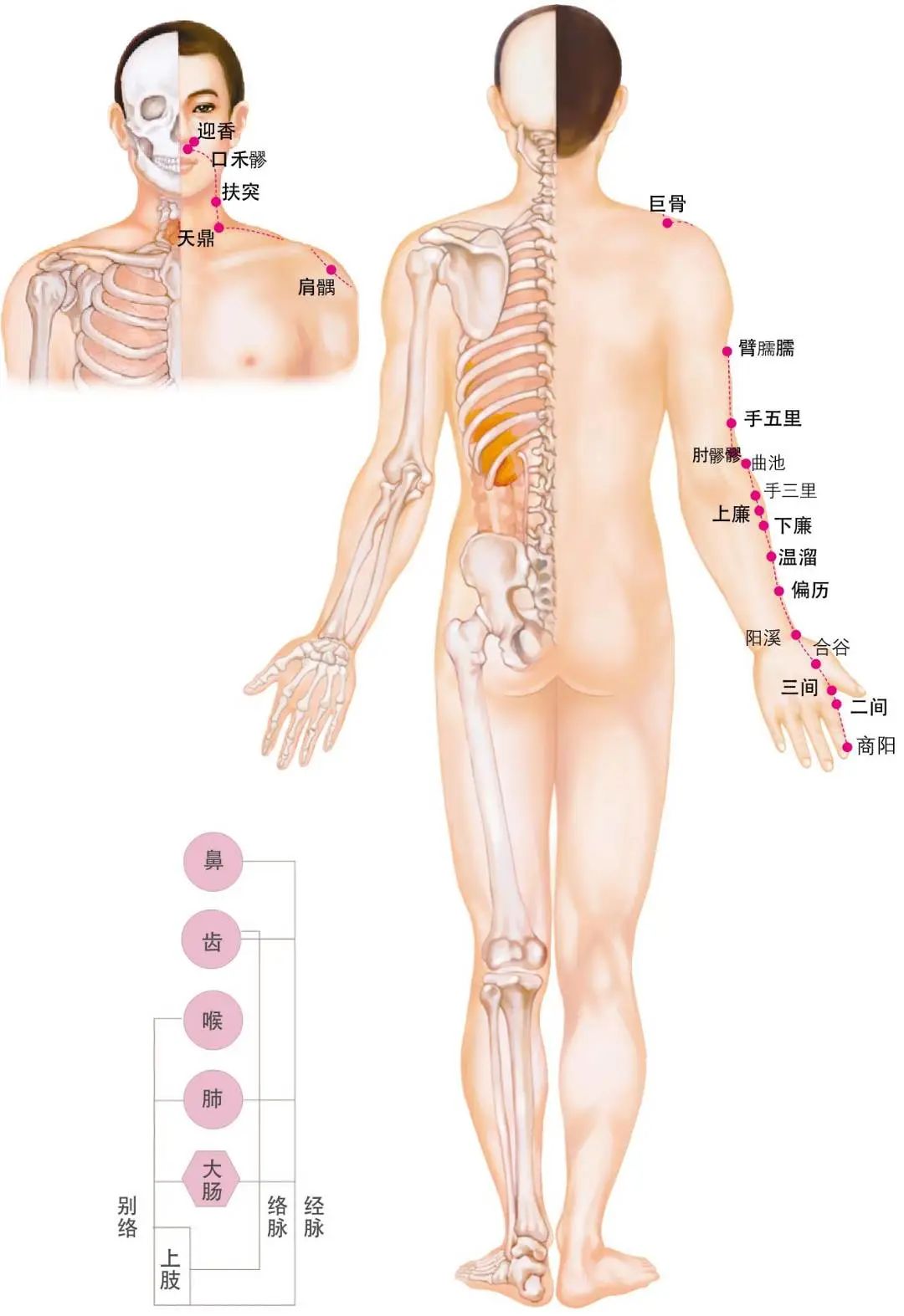
3: Zu Yangming Weijing (Foot Yangming Stomach Meridian)
The Zu Yangming Weijing (Foot Yangming Stomach Meridian) connects at the nose with the Shou Yangming Dachang Jing (Hand Yangming Large Intestine Meridian), relating to the organs of the nose, eyes, upper teeth, lips, throat, and breasts, belonging to the stomach, and linking to the spleen, connecting at the big toe with the Zu Taiyin Pijing (Foot Taiyin Spleen Meridian).
The stomach is the place where qi and blood are generated, and qi and blood are the most basic guarantees for the human body. Therefore, the stomach meridian is the foundation of the human body; to achieve health and longevity, one must not forget to keep the stomach meridian open and functioning smoothly.
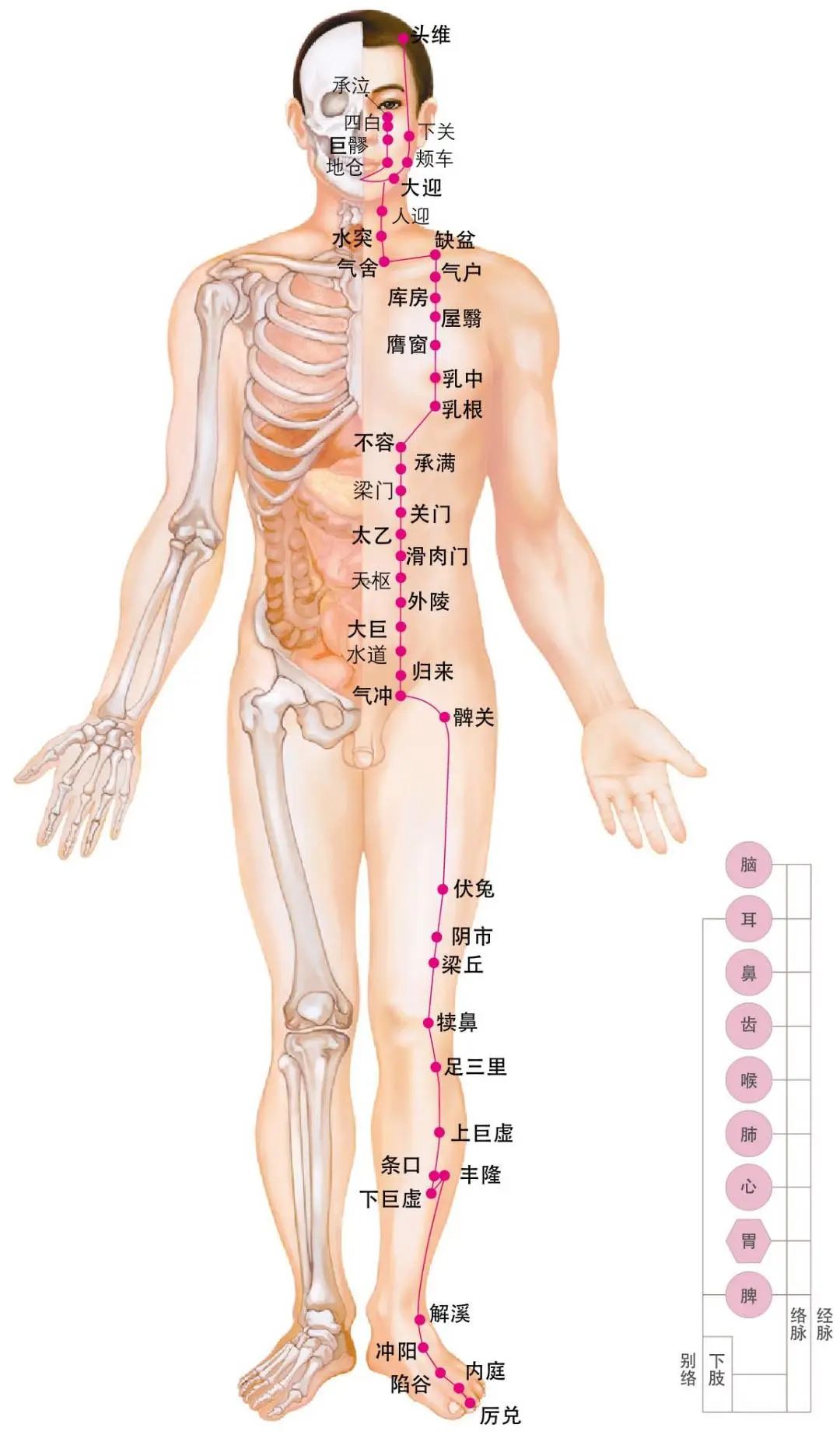
4: Zu Taiyin Pijing (Foot Taiyin Spleen Meridian)
The Zu Taiyin Pijing (Foot Taiyin Spleen Meridian) connects at the big toe with the Zu Yangming Weijing (Foot Yangming Stomach Meridian), relating to the organs of the pharynx and tongue, belonging to the spleen, linking to the stomach, and connecting with the Shou Shaoyin Xinjing (Hand Shaoyin Heart Meridian) in the chest. The collateral meridians branch from this meridian, leading to the Zu Yangming Meridian, entering the abdominal cavity, and connecting with the intestines and stomach.
People with strong spleen qi have a rosy complexion, well-developed muscles, and abundant energy. Additionally, the spleen governs blood, making it a major meridian that everyone should pay attention to throughout their lives. For women, it is an ultimate guardian of health.
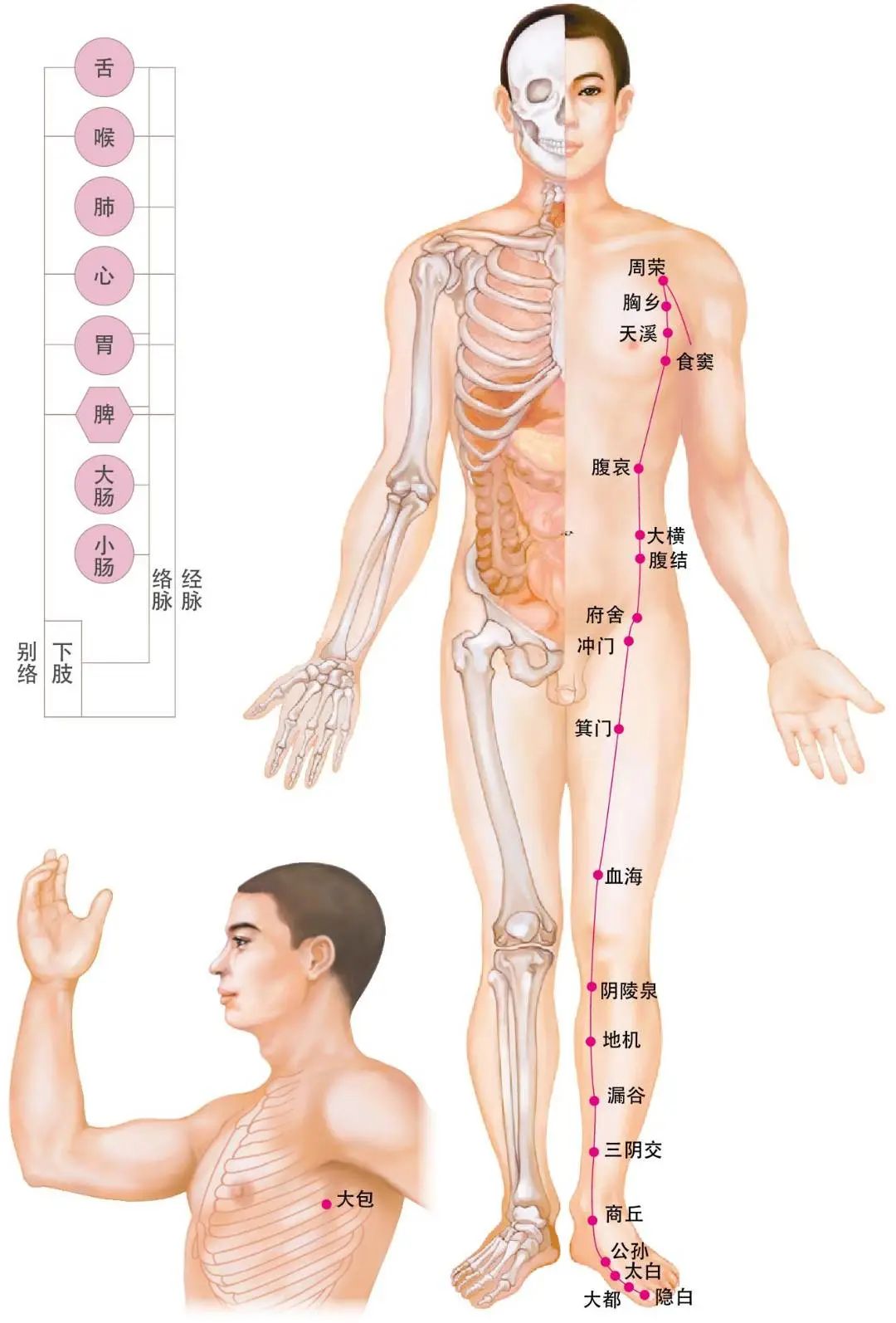
5: Shou Shaoyin Xinjing (Hand Shaoyin Heart Meridian)
The Shou Shaoyin Xinjing (Hand Shaoyin Heart Meridian) connects in the heart with the collateral of the Zu Taiyin Pijing (Foot Taiyin Spleen Meridian), relating to the organs of the heart, esophagus, and eyes, belonging to the heart, linking to the Shou Taiyang Xiaochang Jing (Hand Taiyang Small Intestine Meridian) at the little finger.
The heart meridian, as the name suggests, belongs to the heart. If there are issues, one may feel anxious or experience pain in the sides, hence it is called “the heart is the monarch’s official”. The heart meridian has a good regulating effect on heart diseases.
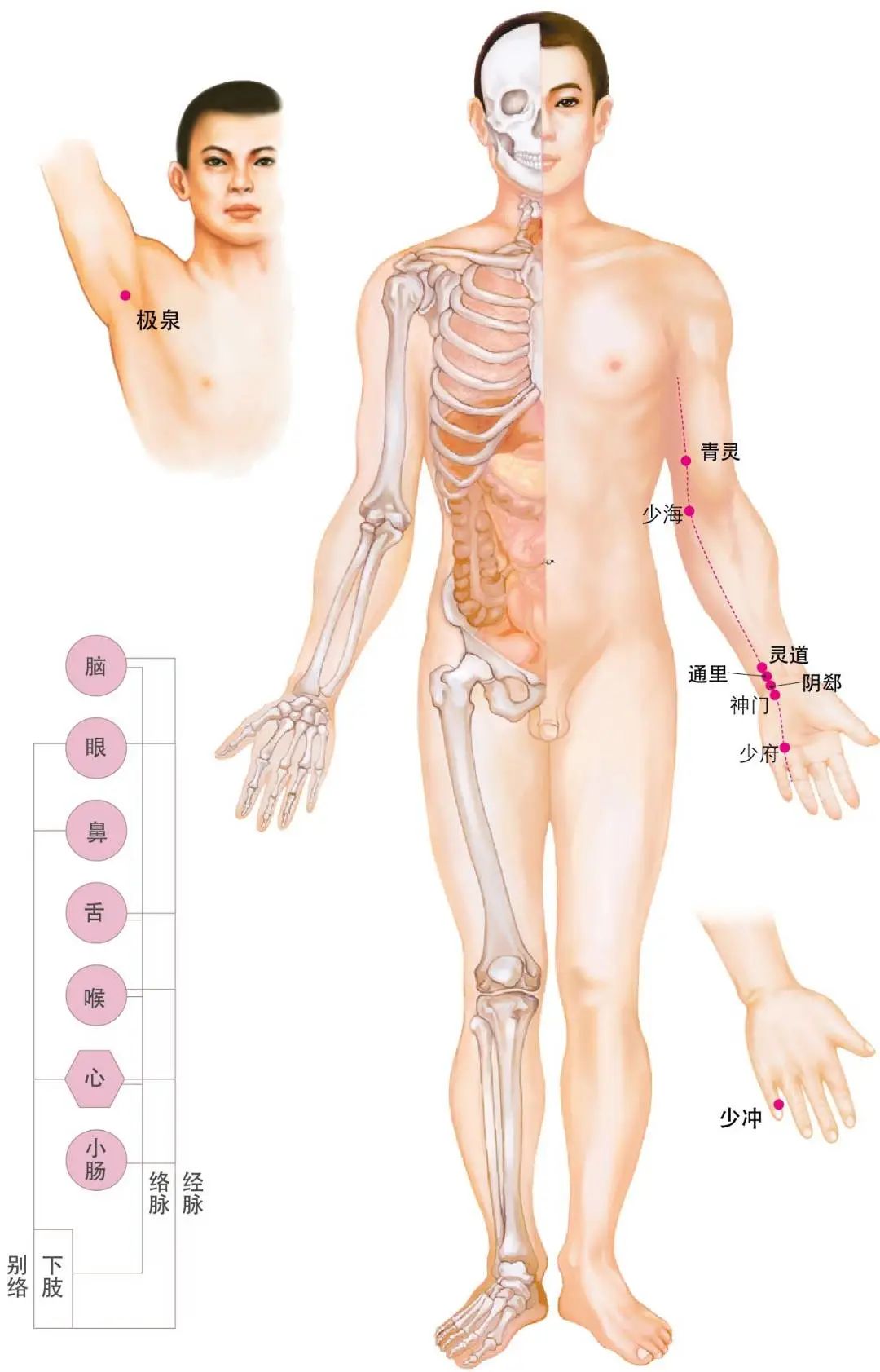
6: Shou Taiyang Xiaochang Jing (Hand Taiyang Small Intestine Meridian)
The Shou Taiyang Xiaochang Jing (Hand Taiyang Small Intestine Meridian) connects at the little finger with the Shou Shaoyin Xinjing (Hand Shaoyin Heart Meridian), relating to the organs of the esophagus, diaphragm, stomach, heart, small intestine, ears, and inner and outer canthus of the eyes, connecting with the Zu Taiyang Pangguang Jing (Foot Taiyang Bladder Meridian) at the inner canthus of the eye.
The heart and small intestine are interrelated; the small intestine meridian relies on the heart meridian for qi and blood supply. If there are issues with the heart, the small intestine meridian will show signs first, thus the Shou Taiyang Xiaochang Jing (Hand Taiyang Small Intestine Meridian) reflects the heart’s capabilities.
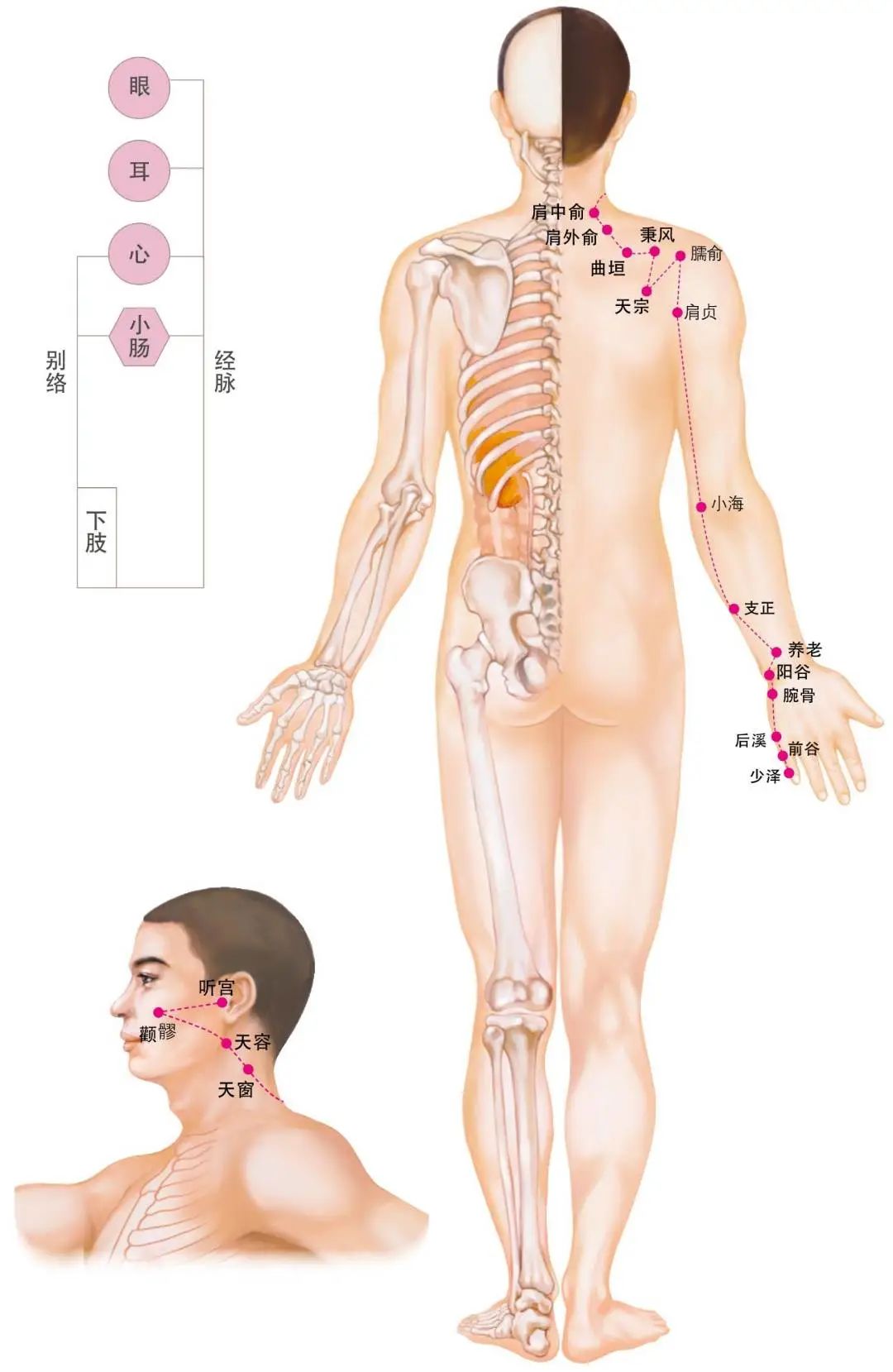
7: Zu Taiyang Pangguang Jing (Foot Taiyang Bladder Meridian)
The Zu Taiyang Pangguang Jing (Foot Taiyang Bladder Meridian) connects at the inner canthus of the eye with the Shou Taiyang Xiaochang Jing (Hand Taiyang Small Intestine Meridian), relating to the organs of the eyes, nose, and brain, belonging to the bladder, linking to the kidneys, connecting at the little toe with the Zu Shaoyin Shen Jing (Foot Shaoyin Kidney Meridian).
Whether it is eye diseases, leg diseases, or issues with the back and spine, one can find major acupoints on the bladder meridian to address these problems.
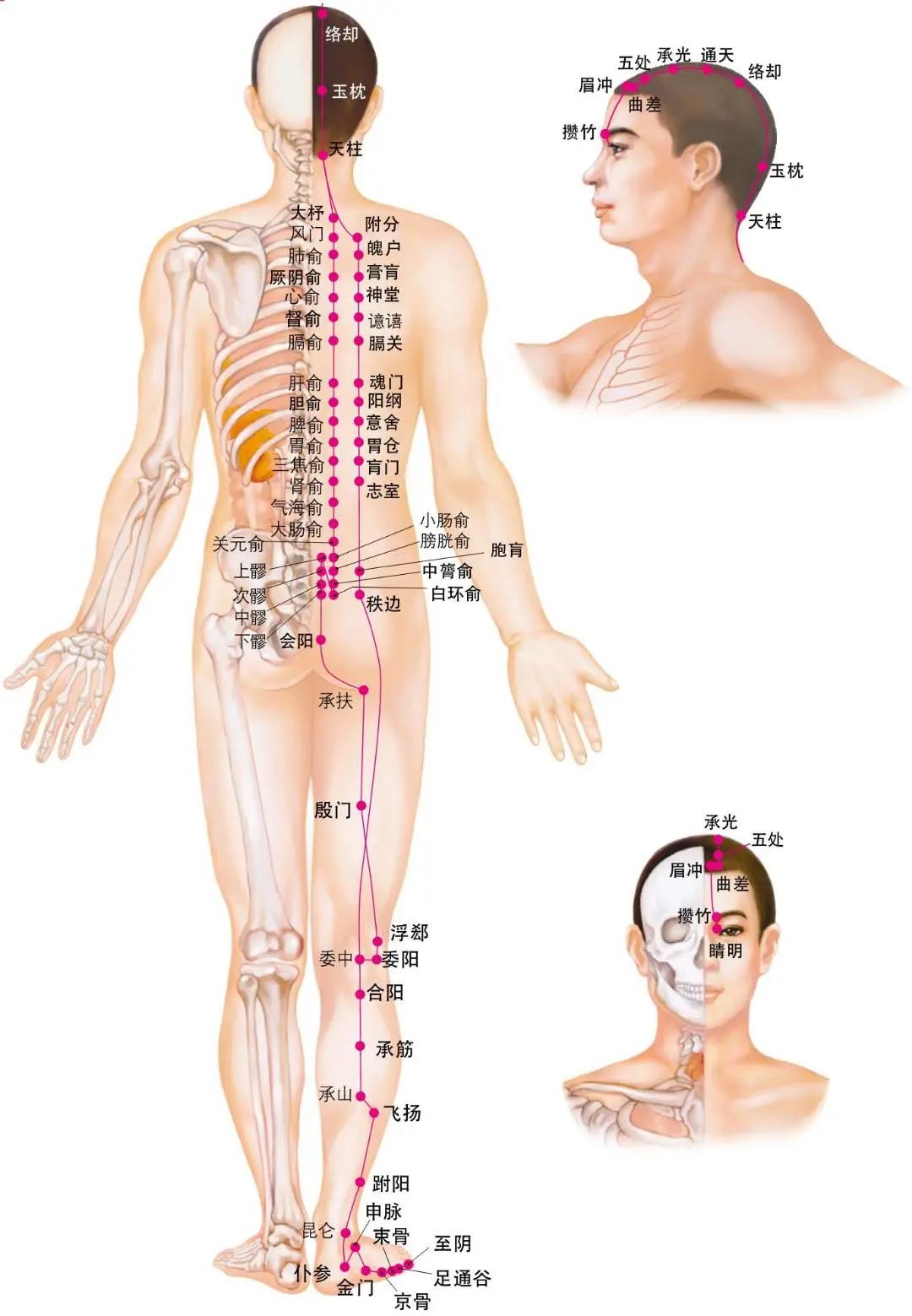 8: Zu Shaoyin Shen Jing (Foot Shaoyin Kidney Meridian) The Zu Shaoyin Shen Jing (Foot Shaoyin Kidney Meridian) connects at the little toe with the Zu Taiyang Pangguang Jing (Foot Taiyang Bladder Meridian), relating to the organs of the throat and tongue, belonging to the kidneys, linking to the bladder, penetrating the liver, entering the lungs, and connecting with the Shou Jueyin Xinbao Jing (Hand Jueyin Pericardium Meridian) in the chest. The collateral meridians branch from this meridian, leading to the Zu Taiyang Meridian, moving through the lumbar region, and ascending to the pericardium.
8: Zu Shaoyin Shen Jing (Foot Shaoyin Kidney Meridian) The Zu Shaoyin Shen Jing (Foot Shaoyin Kidney Meridian) connects at the little toe with the Zu Taiyang Pangguang Jing (Foot Taiyang Bladder Meridian), relating to the organs of the throat and tongue, belonging to the kidneys, linking to the bladder, penetrating the liver, entering the lungs, and connecting with the Shou Jueyin Xinbao Jing (Hand Jueyin Pericardium Meridian) in the chest. The collateral meridians branch from this meridian, leading to the Zu Taiyang Meridian, moving through the lumbar region, and ascending to the pericardium.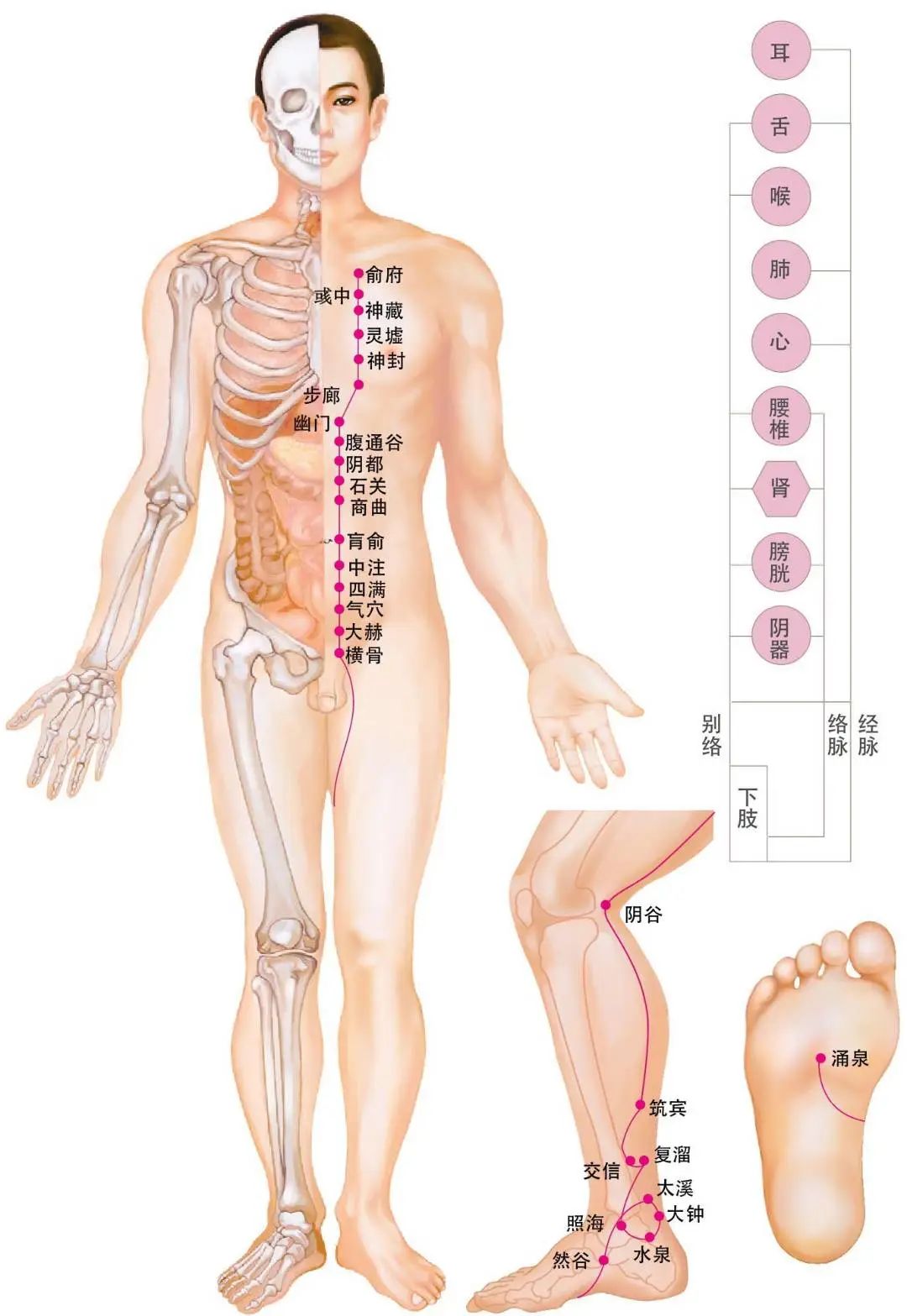 9: Shou Jueyin Xinbao Jing (Hand Jueyin Pericardium Meridian) The Shou Jueyin Xinbao Jing (Hand Jueyin Pericardium Meridian) connects in the chest with the Zu Shaoyin Shen Jing (Foot Shaoyin Kidney Meridian), relating to the organ of the pericardium, linking to the Sanjiao (Triple Burner), connecting at the tip of the ring finger with the Shou Shaoyang Sanjiao Jing (Hand Shaoyang Sanjiao Meridian). The pericardium in TCM refers to the layer of membrane outside the heart, which wraps and protects the heart, like the “internal minister” of the monarch; the heart is the monarch, and the pericardium is the general protecting the monarch, preventing any evil from approaching. The pericardium acts as a “buffer” for the heart.
9: Shou Jueyin Xinbao Jing (Hand Jueyin Pericardium Meridian) The Shou Jueyin Xinbao Jing (Hand Jueyin Pericardium Meridian) connects in the chest with the Zu Shaoyin Shen Jing (Foot Shaoyin Kidney Meridian), relating to the organ of the pericardium, linking to the Sanjiao (Triple Burner), connecting at the tip of the ring finger with the Shou Shaoyang Sanjiao Jing (Hand Shaoyang Sanjiao Meridian). The pericardium in TCM refers to the layer of membrane outside the heart, which wraps and protects the heart, like the “internal minister” of the monarch; the heart is the monarch, and the pericardium is the general protecting the monarch, preventing any evil from approaching. The pericardium acts as a “buffer” for the heart.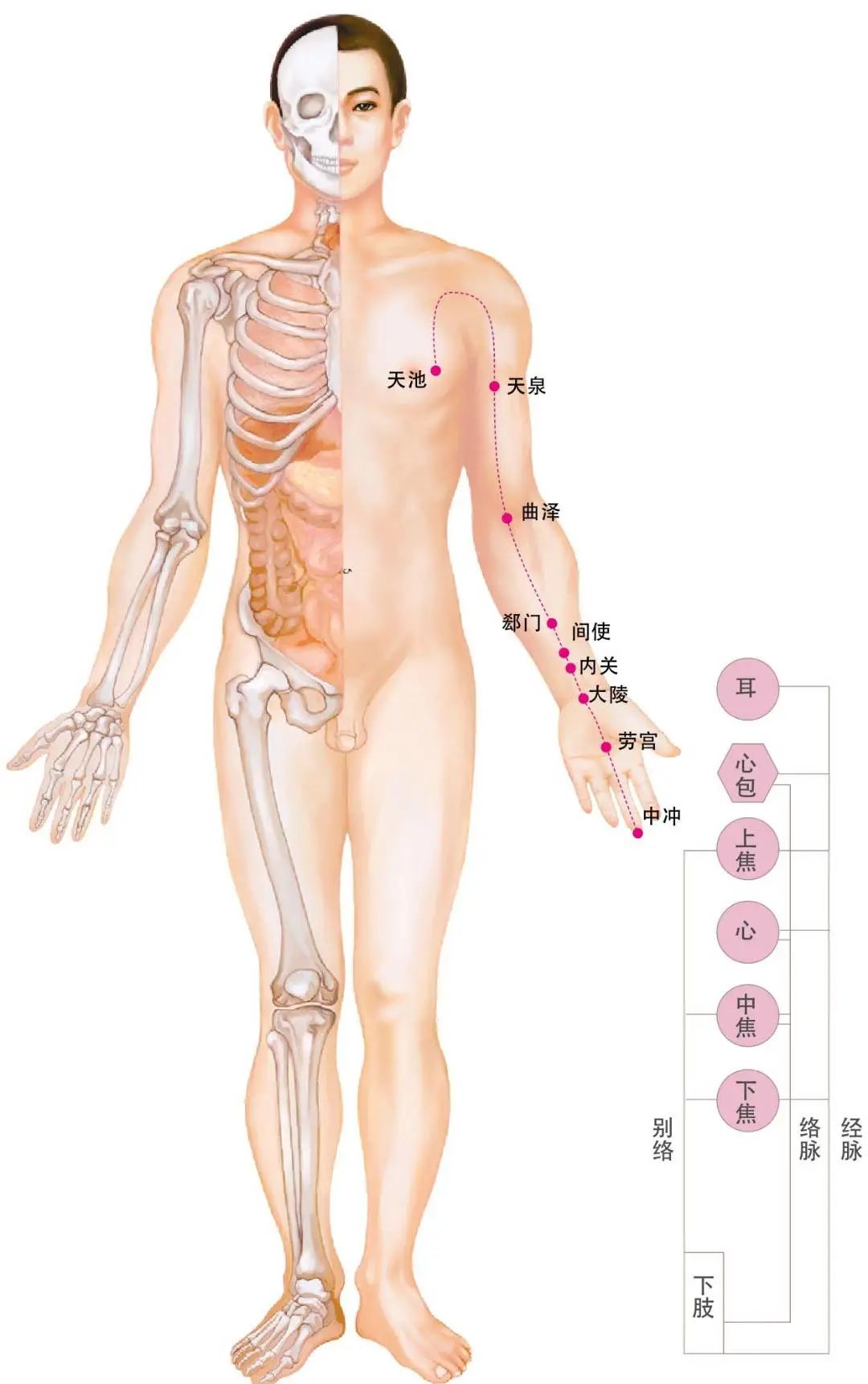 10: Shou Shaoyang Sanjiao Jing (Hand Shaoyang Sanjiao Meridian) The Shou Shaoyang Sanjiao Jing (Hand Shaoyang Sanjiao Meridian) connects at the ring finger with the Shou Jueyin Xinbao Jing (Hand Jueyin Pericardium Meridian), relating to the organs of the ears and eyes, belonging to the Sanjiao (Triple Burner), linking to the Zu Shaoyang Danjing (Foot Shaoyang Gallbladder Meridian) at the outer canthus of the eye. The Sanjiao meridian directly connects to the head and face, so symptoms of this meridian often manifest in the head and face, such as headaches, tinnitus, throat swelling, and facial swelling and pain. These diseases can be treated through major acupoints on the Sanjiao meridian.
10: Shou Shaoyang Sanjiao Jing (Hand Shaoyang Sanjiao Meridian) The Shou Shaoyang Sanjiao Jing (Hand Shaoyang Sanjiao Meridian) connects at the ring finger with the Shou Jueyin Xinbao Jing (Hand Jueyin Pericardium Meridian), relating to the organs of the ears and eyes, belonging to the Sanjiao (Triple Burner), linking to the Zu Shaoyang Danjing (Foot Shaoyang Gallbladder Meridian) at the outer canthus of the eye. The Sanjiao meridian directly connects to the head and face, so symptoms of this meridian often manifest in the head and face, such as headaches, tinnitus, throat swelling, and facial swelling and pain. These diseases can be treated through major acupoints on the Sanjiao meridian.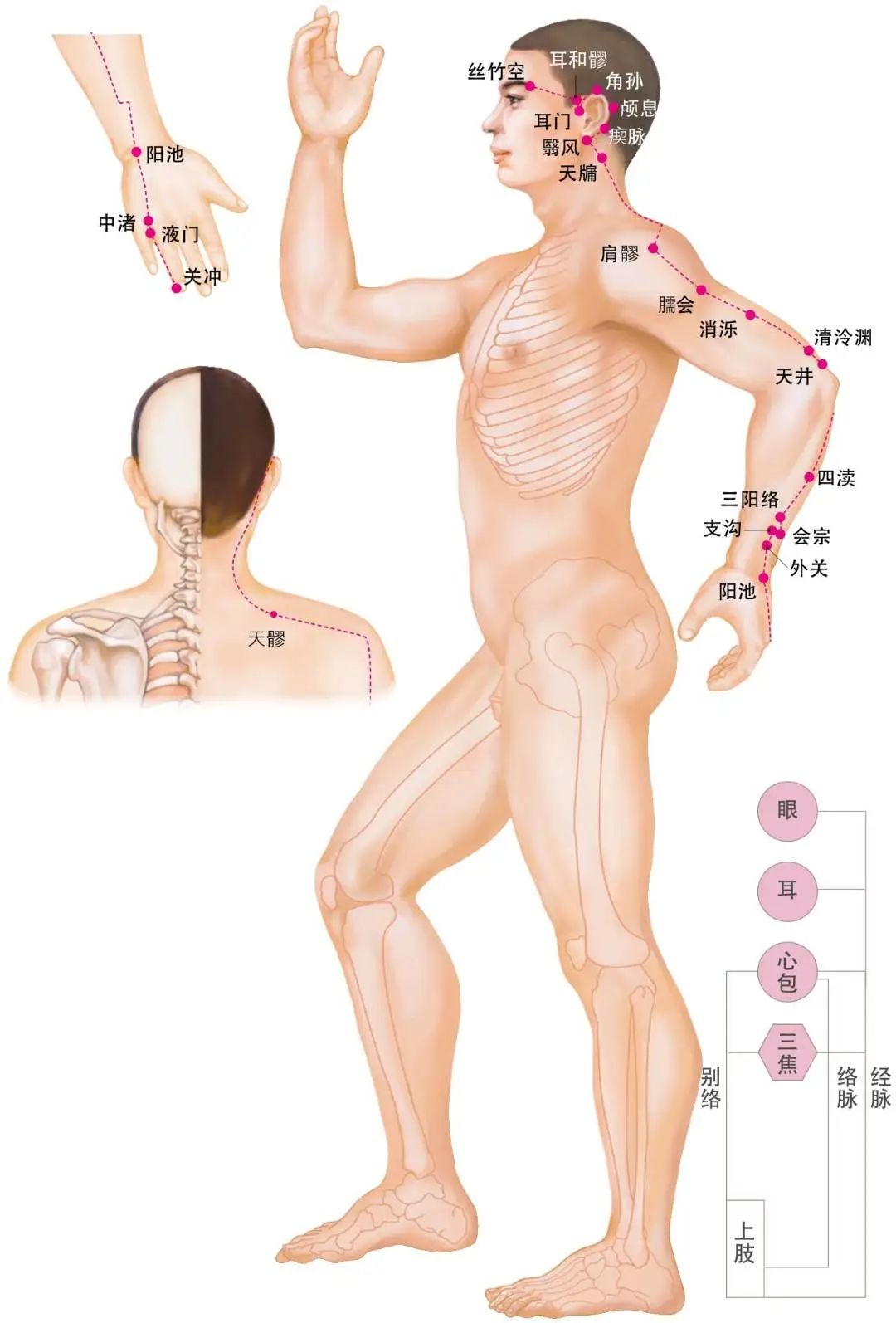 11: Zu Shaoyang Danjing (Foot Shaoyang Gallbladder Meridian) The Zu Shaoyang Danjing (Foot Shaoyang Gallbladder Meridian) connects at the outer canthus of the eye with the Shou Shaoyang Sanjiao Jing (Hand Shaoyang Sanjiao Meridian), relating to the organs of the eyes and ears, belonging to the gallbladder, linking to the liver, connecting at the back of the big toe with the Zu Jueyin Gan Jing (Foot Jueyin Liver Meridian). The gallbladder meridian runs throughout the body, from the head and face down to the shoulders, chest, abdomen, and feet, thus it can address all body issues. Therefore, the gallbladder meridian is a favorite among many.
11: Zu Shaoyang Danjing (Foot Shaoyang Gallbladder Meridian) The Zu Shaoyang Danjing (Foot Shaoyang Gallbladder Meridian) connects at the outer canthus of the eye with the Shou Shaoyang Sanjiao Jing (Hand Shaoyang Sanjiao Meridian), relating to the organs of the eyes and ears, belonging to the gallbladder, linking to the liver, connecting at the back of the big toe with the Zu Jueyin Gan Jing (Foot Jueyin Liver Meridian). The gallbladder meridian runs throughout the body, from the head and face down to the shoulders, chest, abdomen, and feet, thus it can address all body issues. Therefore, the gallbladder meridian is a favorite among many.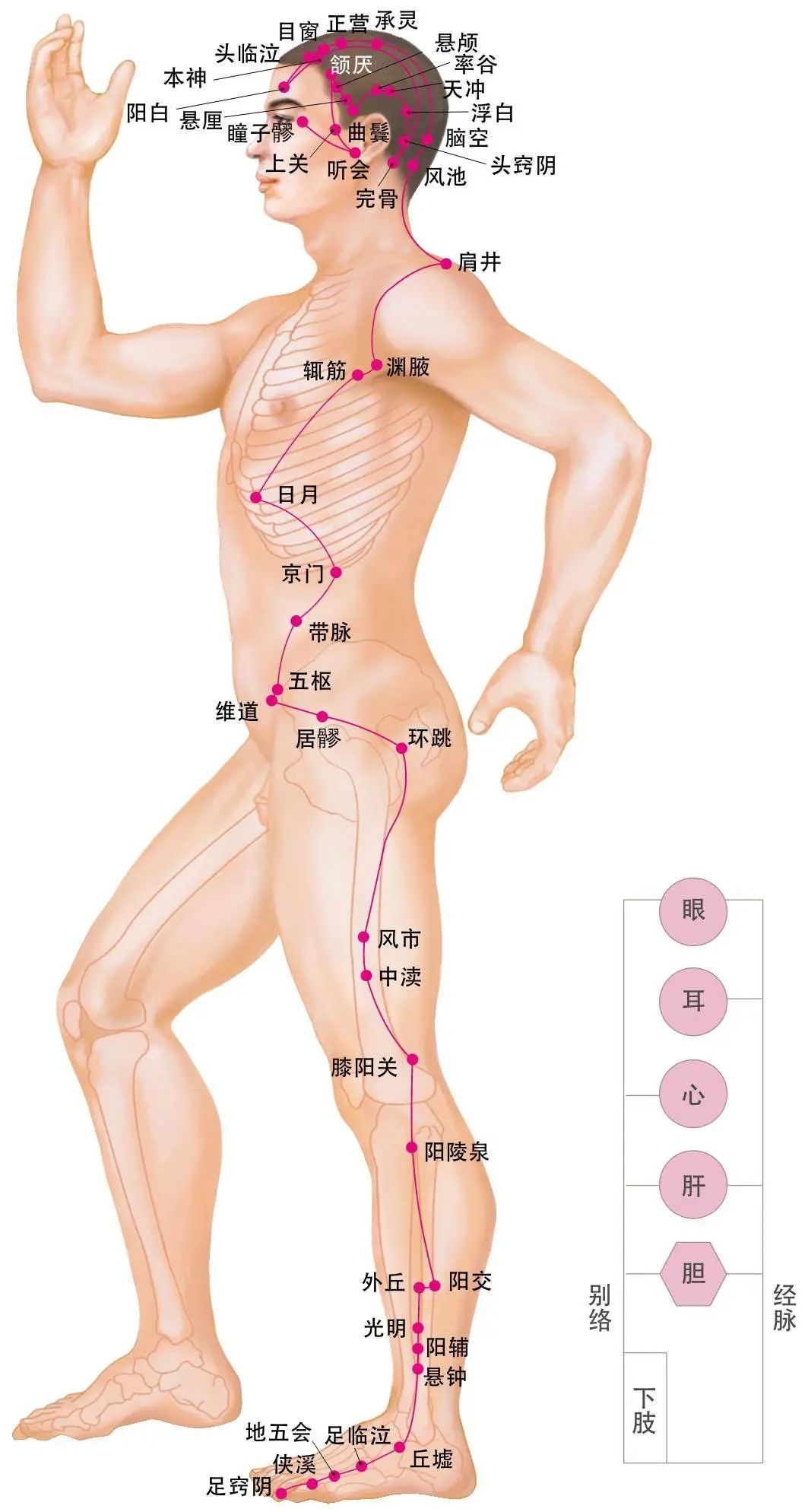 12: Zu Jueyin Gan Jing (Foot Jueyin Liver Meridian) The Zu Jueyin Gan Jing (Foot Jueyin Liver Meridian) connects at the back of the big toe with the Zu Shaoyang Danjing (Foot Shaoyang Gallbladder Meridian), relating to the organs of the genitals, eyes, throat, the area behind the uvula (the area connecting the upper palate and nose), lips, stomach, and lungs, belonging to the liver, linking to the gallbladder, connecting with the Shou Taiyin Feijing (Hand Taiyin Lung Meridian) in the lungs. The liver is closely related to human emotions; if there are issues with the liver meridian, emotions may become irritable or depressed, and the functions of related organs may not perform well, thus affecting overall health.
12: Zu Jueyin Gan Jing (Foot Jueyin Liver Meridian) The Zu Jueyin Gan Jing (Foot Jueyin Liver Meridian) connects at the back of the big toe with the Zu Shaoyang Danjing (Foot Shaoyang Gallbladder Meridian), relating to the organs of the genitals, eyes, throat, the area behind the uvula (the area connecting the upper palate and nose), lips, stomach, and lungs, belonging to the liver, linking to the gallbladder, connecting with the Shou Taiyin Feijing (Hand Taiyin Lung Meridian) in the lungs. The liver is closely related to human emotions; if there are issues with the liver meridian, emotions may become irritable or depressed, and the functions of related organs may not perform well, thus affecting overall health.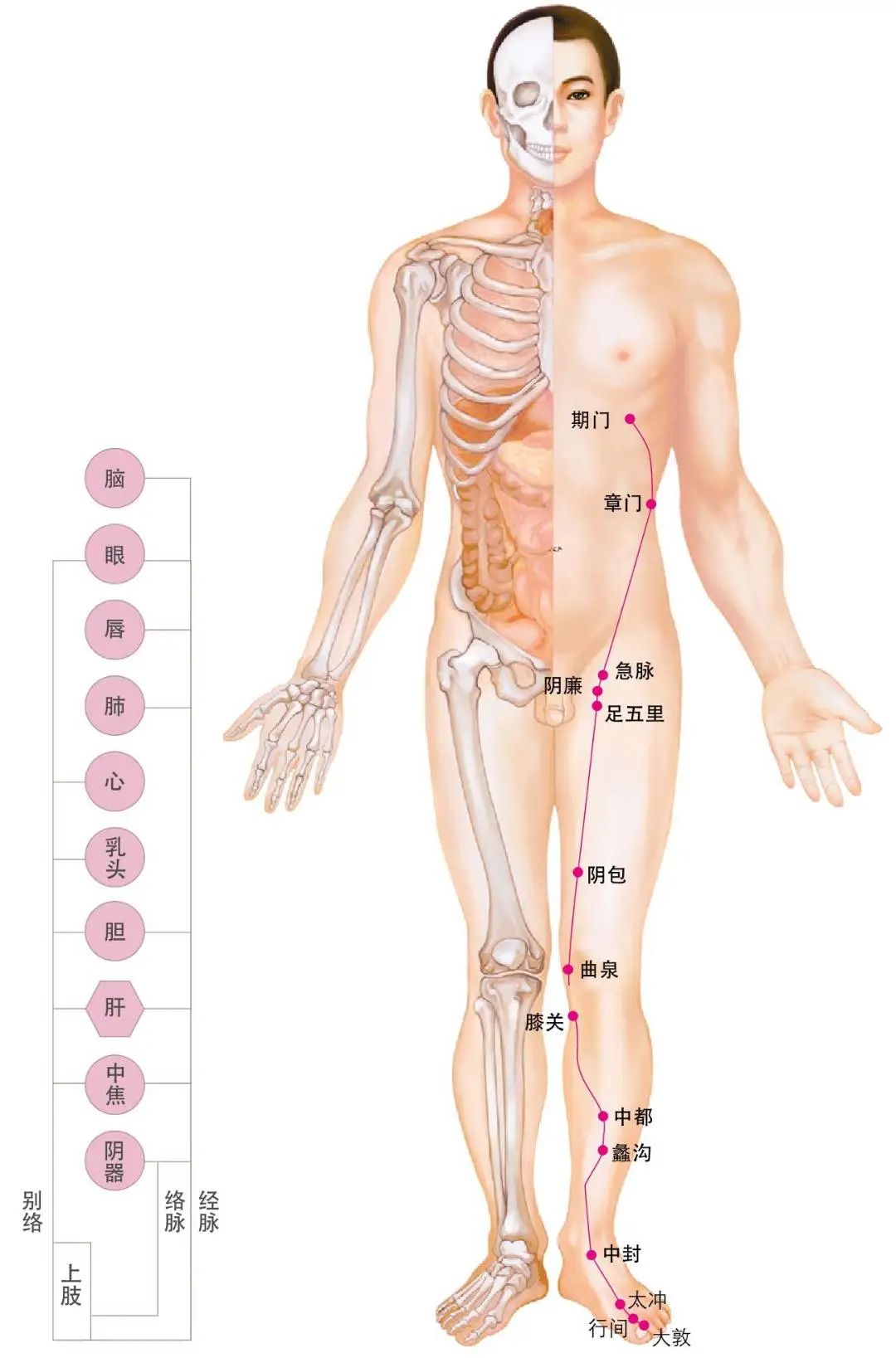
Included in the collection #Meridians
50 items
PreviousDiagram of the Twelve MeridiansNextWhat is the function of the meridians?

Animation of the Pathways of the Twelve Meridians
1 Shou Taiyin Feijing (Hand Taiyin Lung Meridian)
Yin time (3 AM to 5 AM) — Lung meridian is strong. During this time, sleep is deep, complexion is red, and energy is abundant;
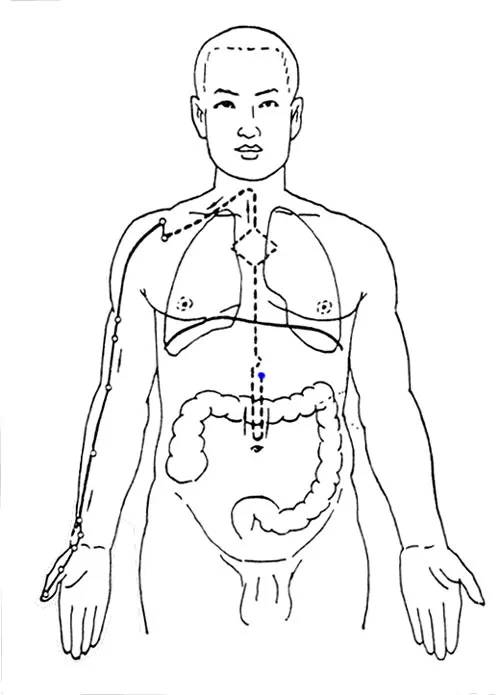
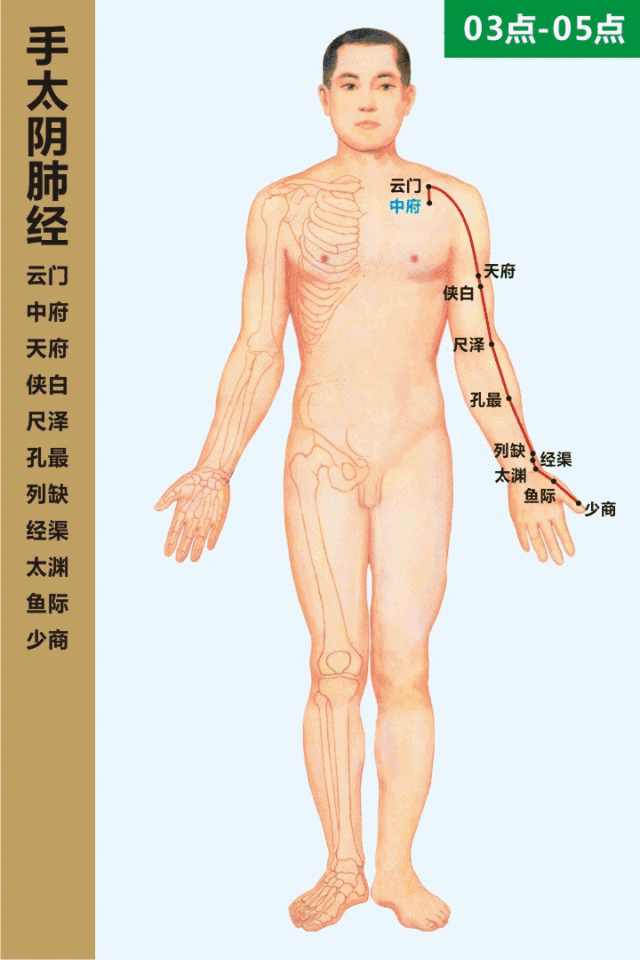
“The lungs govern the hundred vessels.” After the liver pushes the blood to renew, it provides fresh blood to the lungs, which then distributes it throughout the body. Therefore, in the morning, the complexion is rosy, and energy is abundant. During the yin time, those with lung diseases reflect the strongest symptoms, such as severe coughing or asthma.
Excess Symptoms:Abdominal distension, tendency to constipation, prone to hemorrhoids, discomfort or pain in the shoulder and back, toothache, skin abnormalities, and upper abdomen abnormalities.
2 Shou Yangming Dachang Jing (Hand Yangming Large Intestine Meridian)
Yin time (5 AM to 7 AM) — Large intestine meridian is strong. During this time, the large intestine peristalsis occurs, expelling toxins;“The lungs and large intestine are interrelated.” The lungs distribute sufficient fresh blood throughout the body, which then stimulates the large intestine to complete the absorption of water and nutrients from food and expel waste. It is best to have a bowel movement after getting up in the morning.
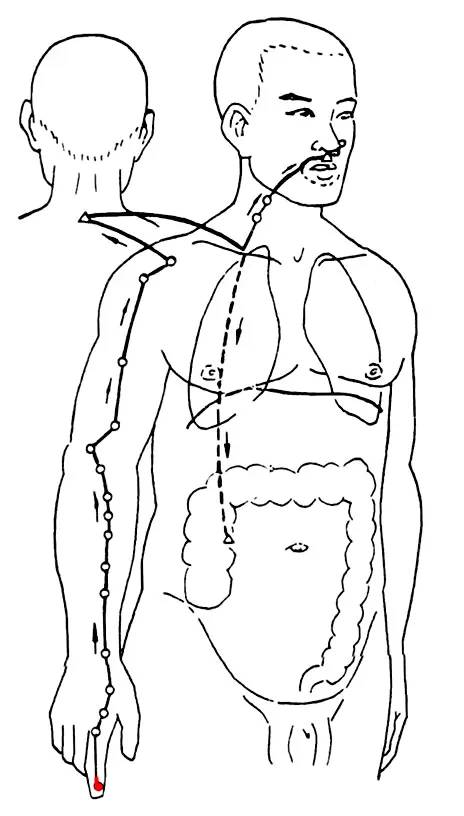
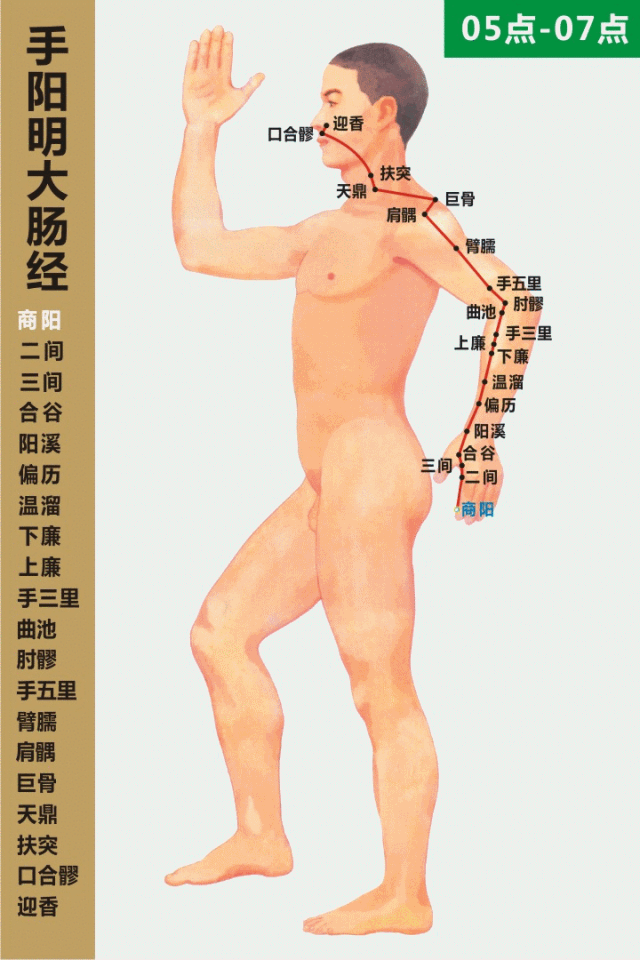
Excess Symptoms:Tendency to hunger, weak stomach, joint abnormalities, appetite abnormalities, dry mouth, tendency to constipation.
Health Tips:Get up quickly, drink a cup of warm water after getting up, and then rush to the toilet to expel the waste accumulated throughout the day! However, do not rush too much; many elderly people suffer strokes because of this. It is better to rest for 10-20 minutes to clear the mind before going. Recommended foods include: eggplant, spinach, bananas, mushrooms, corn, lentils, peas, etc.
3 Zu Yangming Weijing (Foot Yangming Stomach Meridian)
Chen time (7 AM to 9 AM) — Stomach meridian is strong. During this time, having breakfast nourishes the body;
During this time, breakfast is easiest to digest and absorb. Breakfast can include gentle, stomach-nourishing foods such as porridge, oatmeal, and buns. Overly hot foods can easily cause stomach fire, leading to cracked lips and sores. Skipping breakfast can lead to various diseases.
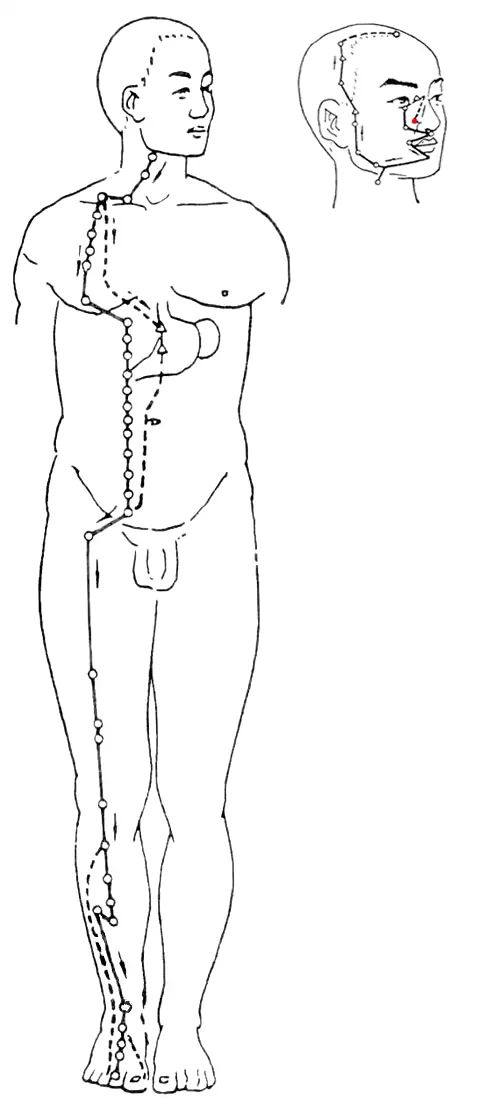
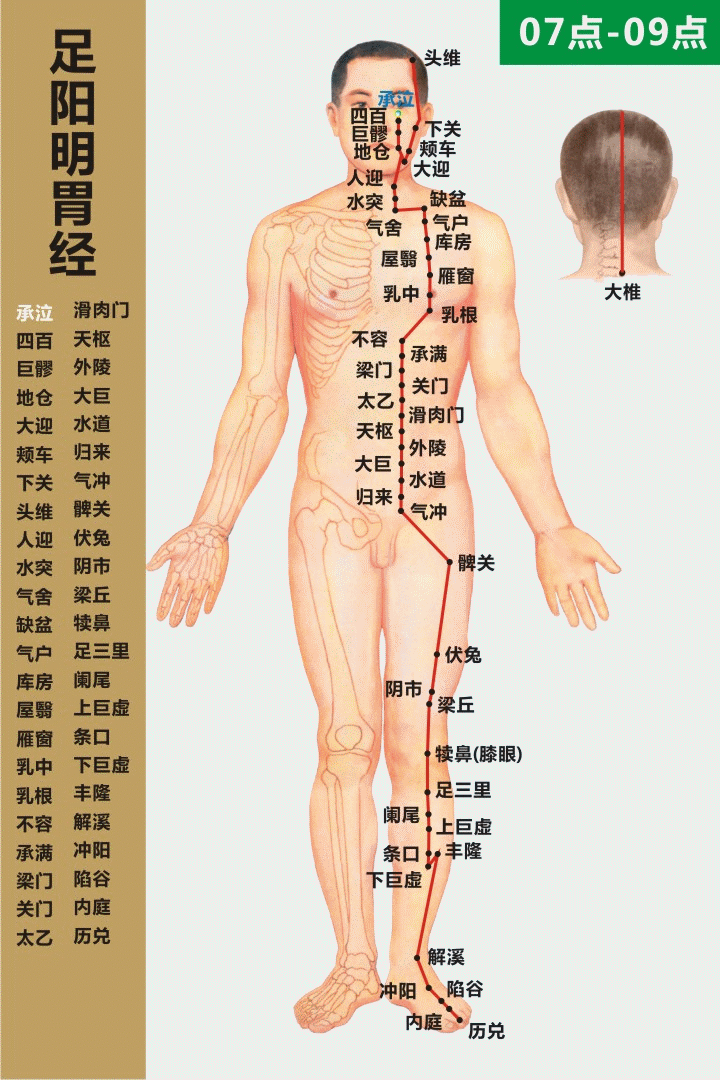
Excess Symptoms:Disharmony of spleen and stomach, poor digestion and absorption, tendency to abdominal distension and belching, headaches, fatigue, joint abnormalities, abnormal bowel movements, etc.
Health Tips:It is important to have breakfast during this time. If you do not provide food, the stomach will continue to secrete gastric acid. If you go hungry for too long, there is a risk of gastric ulcers, gastritis, duodenitis, and cholecystitis! Massaging the stomach meridian one hour after meals can help regulate gastrointestinal function.
4 Zu Taiyin Pijing (Foot Taiyin Spleen Meridian)
Si time (9 AM to 11 AM) — Spleen meridian is strong. During this time, the spleen is active, producing blood for the body;
“The spleen governs transportation and transformation, and the spleen governs blood.” The spleen is the overall coordinator of digestion, absorption, and excretion, and it is also the commander of blood in the human body. “The spleen opens to the mouth, and its beauty is in the lips.” When the spleen functions well, digestion and absorption are good, and blood quality is good, leading to rosy lips. Pale lips indicate insufficient blood qi, while dark or purple lips indicate cold entering the spleen meridian.

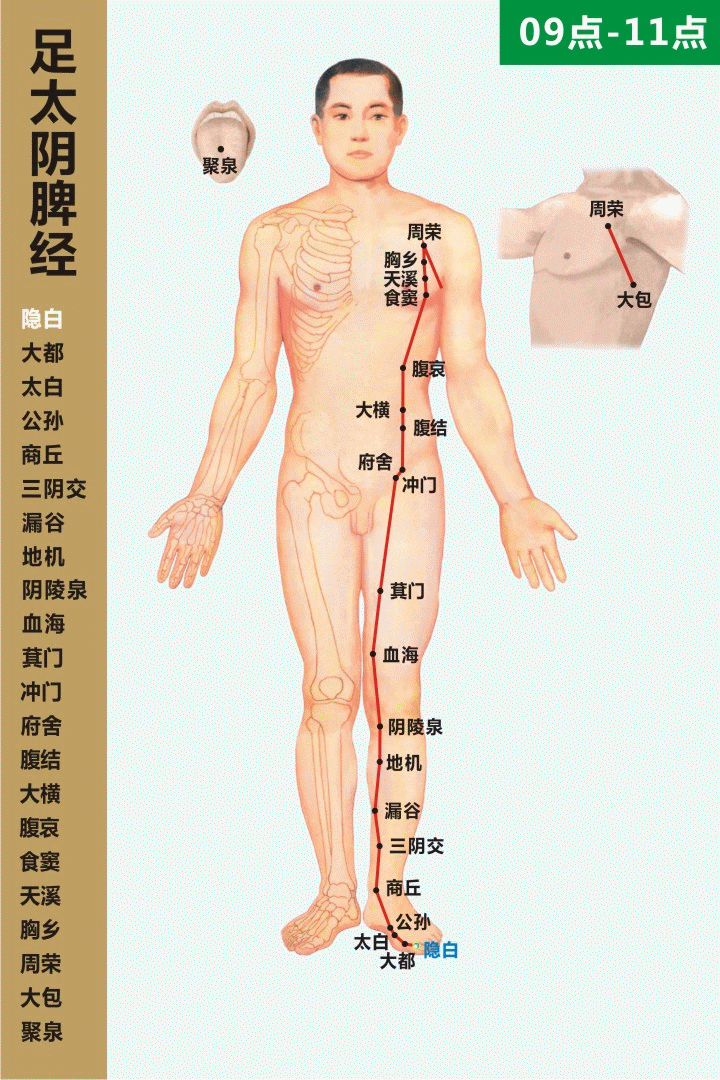
Health Tips:Disharmony of spleen and stomach, poor digestion and absorption, spleen deficiency can lead to decreased memory, etc. This time is the best time to open acupoints on the spleen meridian and protect the spleen. It is almost time for lunch; if conditions allow, it is recommended to cook at home and choose foods such as lentils, sweet potatoes, potatoes, tofu, celery, corn, and rice. Fruits can include apples, oranges, lemons, and tangerines. Teas can include green tea, flower tea, and honey water.
5 Shou Shaoyin Xinjing (Hand Shaoyin Heart Meridian)
Shou Shaoyin Xinjing (Hand Shaoyin Heart Meridian) is strong during Wu time (11 AM to 1 PM). A short rest during this time is beneficial for calming the mind and nourishing energy;
“The heart governs the spirit, opens to the tongue, and its beauty is in the face.” The heart qi promotes blood circulation, nourishing the spirit, energy, and tendons.
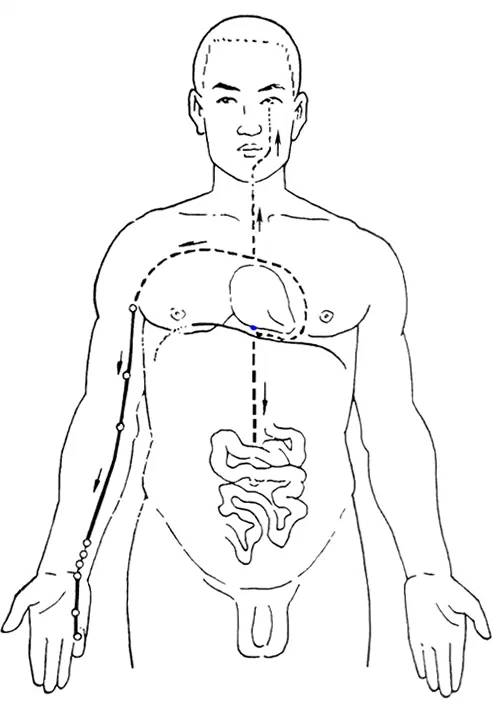
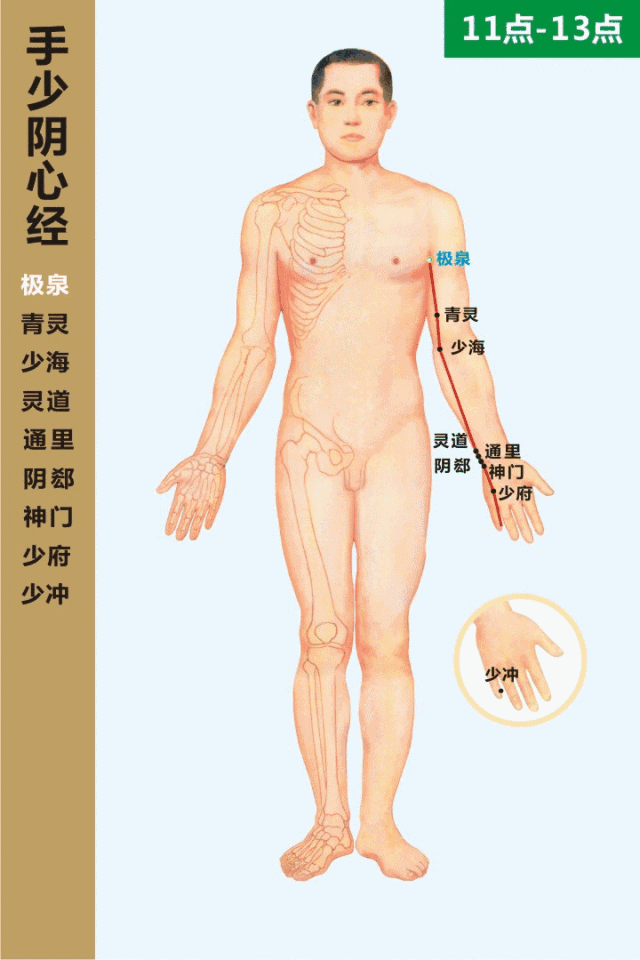
During Wu time, a short nap is very beneficial for the heart, allowing for abundant energy from the afternoon to the evening.
6 Shou Taiyang Xiaochang Jing (Hand Taiyang Small Intestine Meridian)
Wei time (1 PM to 3 PM) — Small intestine meridian is strong. During this time, the small intestine separates clear from turbid, and drinking water can reduce heat;
The small intestine separates clear from turbid, returning water to the bladder and sending waste to the large intestine, while the essence is sent up to the spleen.
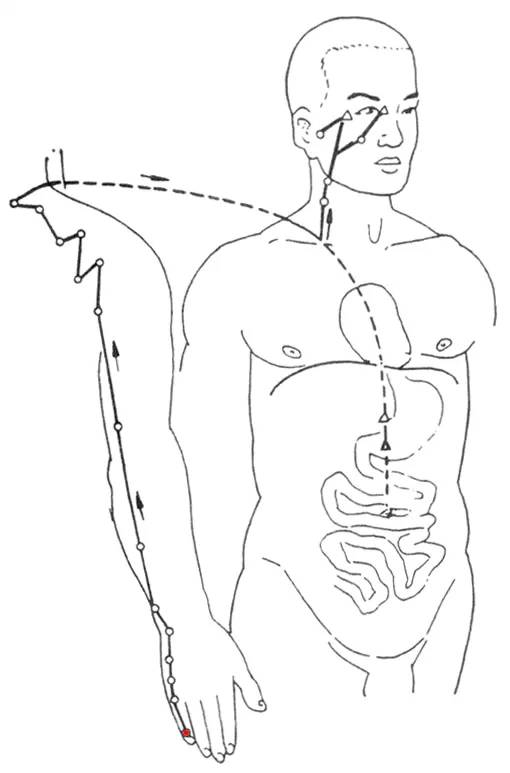
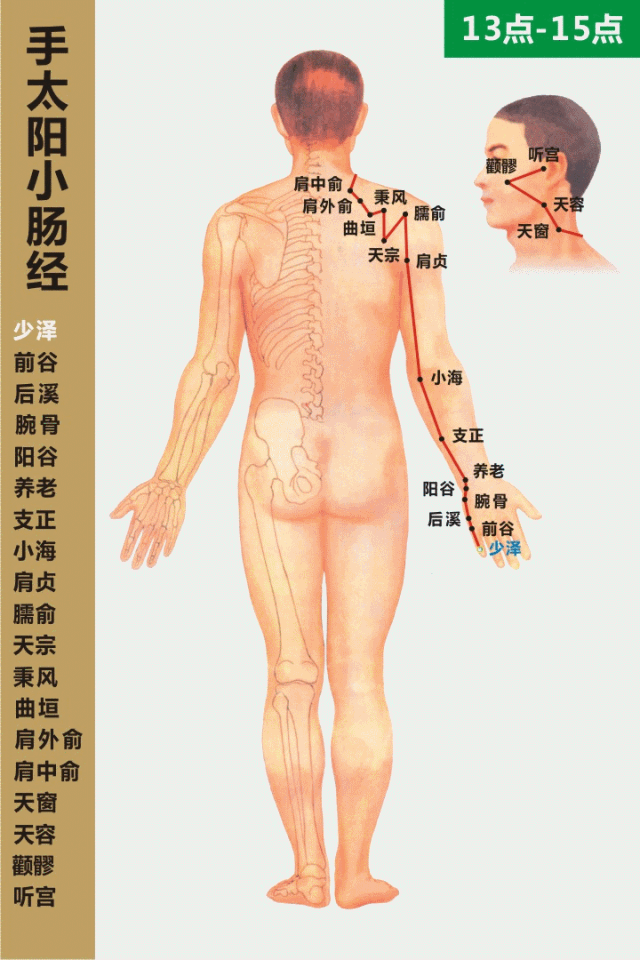
The small intestine meridian adjusts the nutrition of the body during Wei time. If there is heat in the small intestine, one may experience dry cough and flatulence. Drinking more water and tea is beneficial for the small intestine to expel heat.
7 Zu Taiyang Pangguang Jing (Foot Taiyang Bladder Meridian)
Shen time (3 PM to 5 PM) — Bladder meridian is strong. During this time, body fluids are sufficient, nourishing yin and making the body comfortable;
The bladder stores water and body fluids, expelling them from the body while circulating body fluids internally. If there is heat in the bladder, it can cause bladder cough and urinary incontinence. During Shen time, the body temperature is relatively high, and those with yin deficiency are most prominent. Appropriate activity at this time helps the circulation of body fluids, and drinking teas that nourish yin and clear heat is most effective for those with yin deficiency.
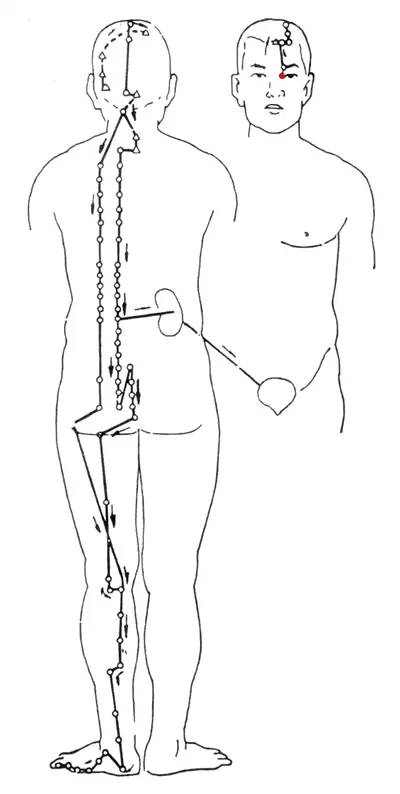
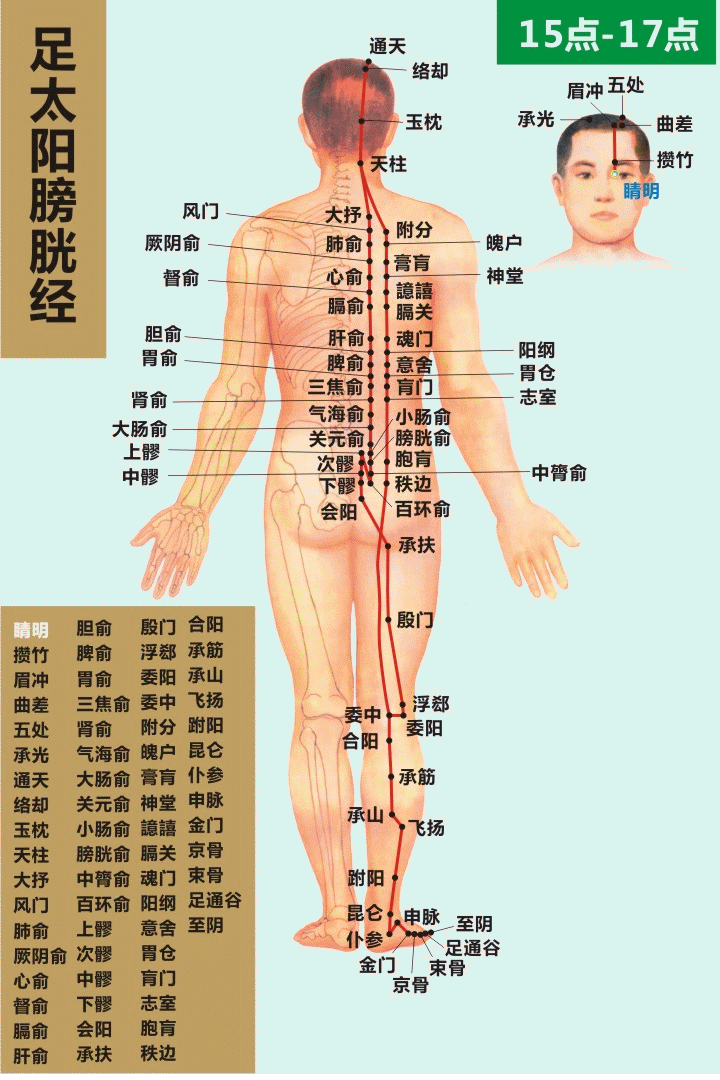
If there is heat in the bladder, it can cause bladder cough and urinary incontinence. During Shen time, the body temperature is relatively high, and those with yin deficiency are most prominent. Appropriate activity at this time helps the circulation of body fluids, and drinking teas that nourish yin and clear heat is most effective for those with yin deficiency.
8 Zu Shaoyin Shen Jing (Foot Shaoyin Kidney Meridian)
You time (5 PM to 7 PM) — Kidney meridian is strong. During this time, the kidneys store essence and absorb the clear energy;

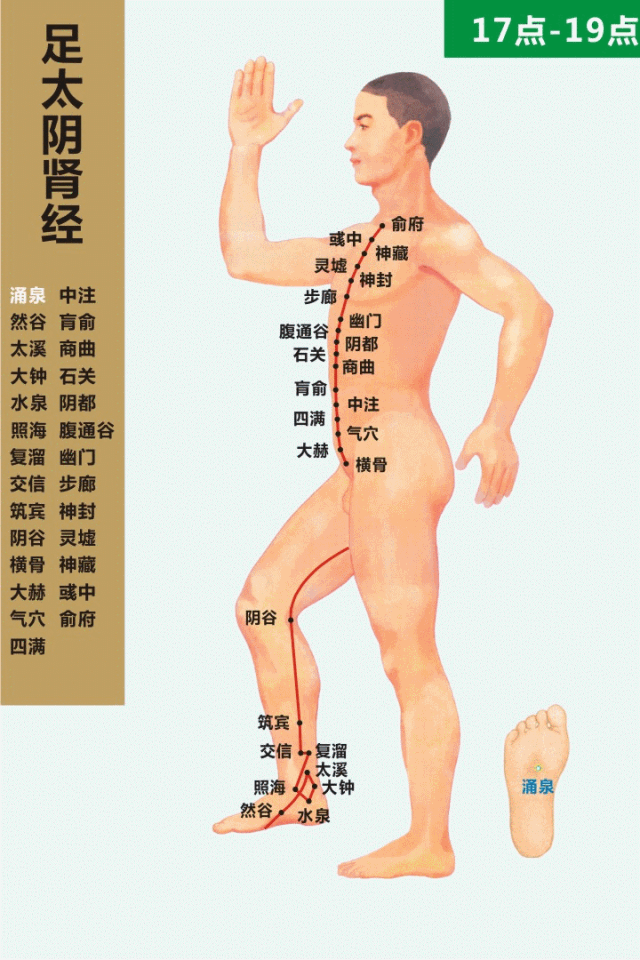
“The kidneys store reproductive essence and the essence of the five organs and six bowels. The kidneys are the root of congenital energy.” After the body expels heat and detoxifies during Shen time, the kidneys enter a phase of storing essence during You time. It is not suitable for excessive exercise or drinking large amounts of water at this time.
“The kidneys store reproductive essence and the essence of the five organs and six bowels. The kidneys are the root of congenital energy.” After the body expels heat and detoxifies during Shen time, the kidneys enter a phase of storing essence during You time. It is not suitable for excessive exercise or drinking large amounts of water at this time.
9 Shou Jueyin Xinbao Jing (Hand Jueyin Pericardium Meridian)
Xu time (7 PM to 9 PM) — Pericardium meridian is strong. During this time, protect the heart and relieve pressure for a comfortable heart;
“The pericardium is the outer membrane of the heart, attached to the vessels, and is the pathway for qi and blood. Evil cannot reside here, as it harms the heart.” The pericardium is the protective tissue of the heart and also a pathway for qi and blood. The pericardium meridian is most active during Xu time, clearing external evils around the heart, keeping the heart in a healthy state. It is essential to maintain a pleasant mood during this time: read, listen to music, do spa, dance, practice Tai Chi… relax and release stress.
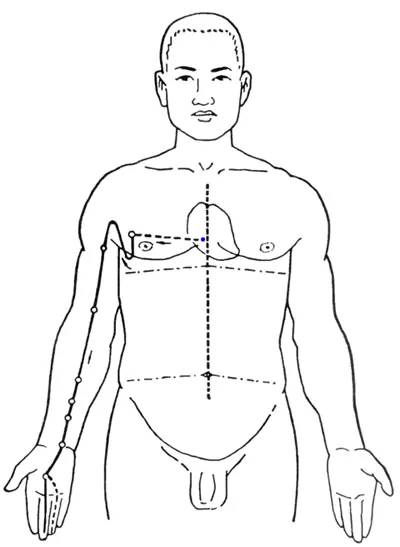
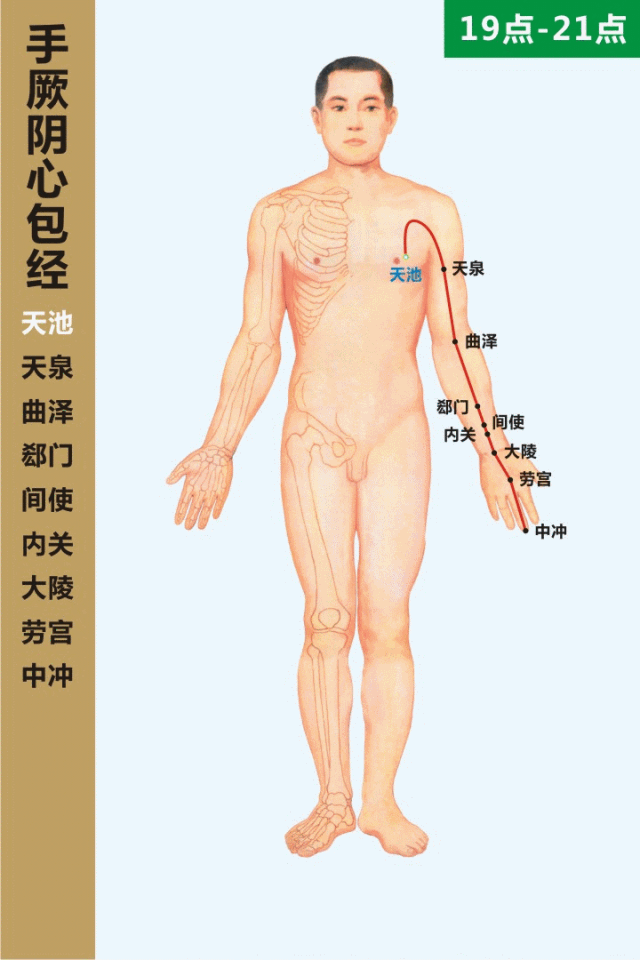
“Evil cannot reside here, as it harms the heart.” The pericardium is the protective tissue of the heart and also a pathway for qi and blood. The pericardium meridian is most active during Xu time, clearing external evils around the heart, keeping the heart in a healthy state. It is essential to maintain a pleasant mood during this time: read, listen to music, do spa, dance, practice Tai Chi… relax and release stress.
10 Shou Shaoyang Sanjiao Jing (Hand Shaoyang Sanjiao Meridian)
Hai time (9 PM to 11 PM) — Sanjiao meridian is strong. During this time, the hundred vessels are open, nourishing the body and enhancing beauty. The Sanjiao is the largest of the six bowels, responsible for managing qi and unblocking water pathways. During Hai time, the Sanjiao can open the hundred vessels.
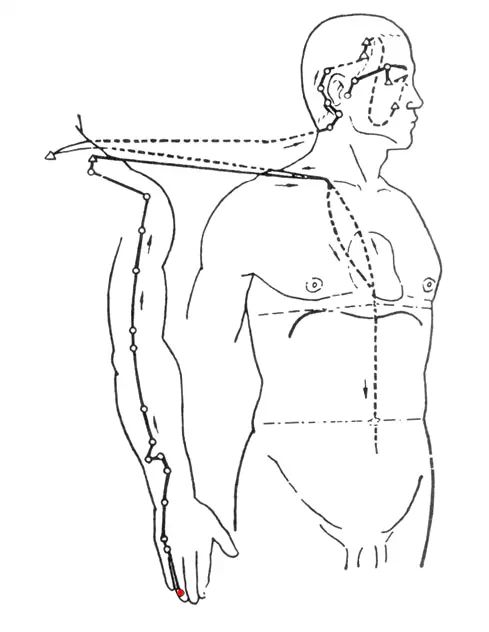
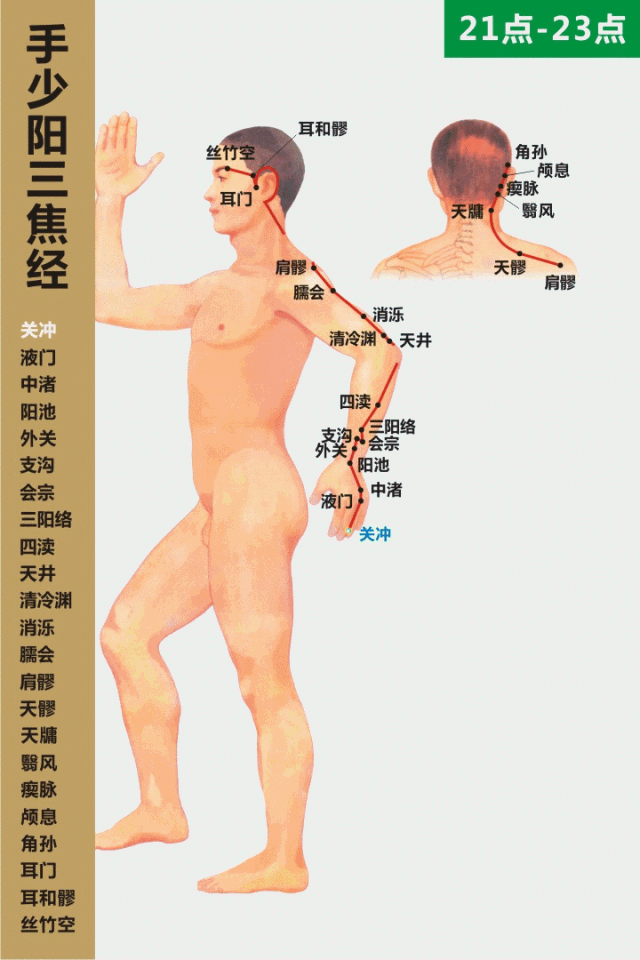
If a person sleeps during Hai time, the hundred vessels can receive the best rest and recovery, which is very beneficial for the body and beauty. A common characteristic of centenarians is that they sleep during Hai time. If modern people do not want to sleep at this time, they can listen to music, read, watch TV, or practice yoga, but it is best not to stay awake past Hai time.
If a person sleeps during Hai time, the hundred vessels can receive the best rest and recovery, which is very beneficial for the body and beauty. A common characteristic of centenarians is that they sleep during Hai time. If modern people do not want to sleep at this time, they can listen to music, read, watch TV, or practice yoga, but it is best not to stay awake past Hai time.
11 Zu Shaoyang Danjing (Foot Shaoyang Gallbladder Meridian)
Zi time (11 PM to 1 AM) — Gallbladder meridian is strong. During this time, sleep is deep, and dark circles do not appear; TCM theory states: “The excess qi of the liver is discharged into the gallbladder, where it is gathered and refined.” If a person sleeps before Zi time, the gallbladder can complete its metabolism. “The clearer the bile, the clearer the brain.” Those who sleep before Zi time wake up with a clear mind, rosy complexion, and no dark circles. Conversely, those who cannot sleep during Zi time tend to have a pale complexion and dark circles under the eyes. Additionally, poor bile metabolism can lead to the formation of crystals and stones.
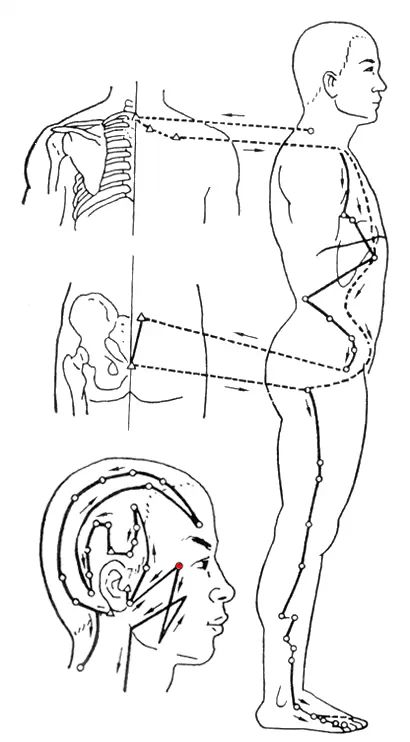
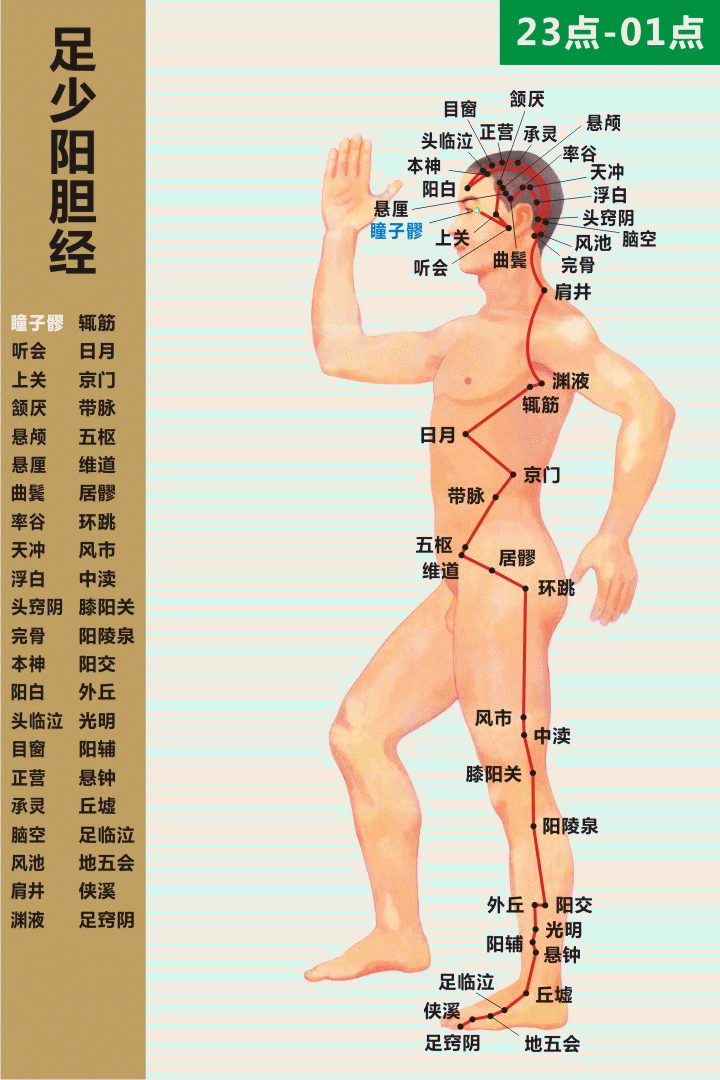
If a person sleeps before Zi time, the gallbladder can complete its metabolism. “The clearer the bile, the clearer the brain.” Those who sleep before Zi time wake up with a clear mind, rosy complexion, and no dark circles. Conversely, those who cannot sleep during Zi time tend to have a pale complexion and dark circles under the eyes. Additionally, poor bile metabolism can lead to the formation of crystals and stones.
12 Zu Jueyin Gan Jing (Foot Jueyin Liver Meridian)
Chou time (1 AM to 3 AM) — Liver meridian is strong. If one does not sleep during Chou time, spots may appear on the face; TCM theory states: “The liver stores blood.” “When a person sleeps, blood returns to the liver.”

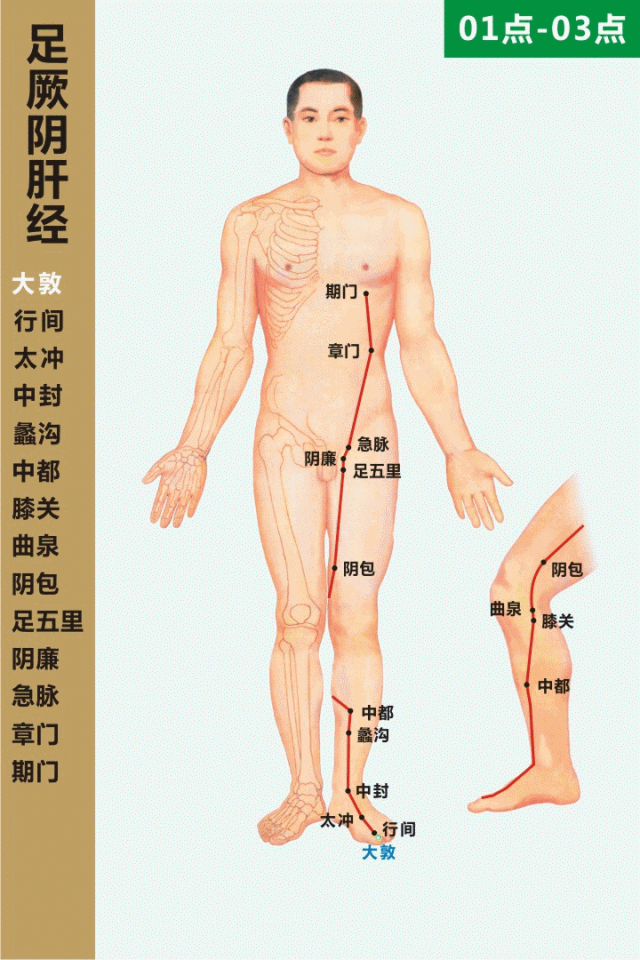
If one does not sleep during Chou time, the liver continues to output energy to support thinking and actions, failing to complete metabolism. Therefore, those who cannot sleep before Chou time may have a grayish complexion, emotional sluggishness, and irritability, leading to liver diseases, and a dull complexion with spots.
Deficiency Symptoms:Decreased skin immunity, cold hands and feet, numbness, dry throat, cough, etc.
Excess Symptoms:Difficulty breathing, throat abnormalities, chest tightness, wheezing, tonsillitis, cough, shoulder and back pain, and tendency to hemorrhoids.
Health Tips:At this time, the body needs a lot of oxygen, requiring deep breathing, so deep sleep is necessary. If you wake up coughing, it is best to drink a cup of warm water to relieve it and alleviate lung dryness. Recommended foods include: cabbage, pears, tofu, soy milk, and milk.
